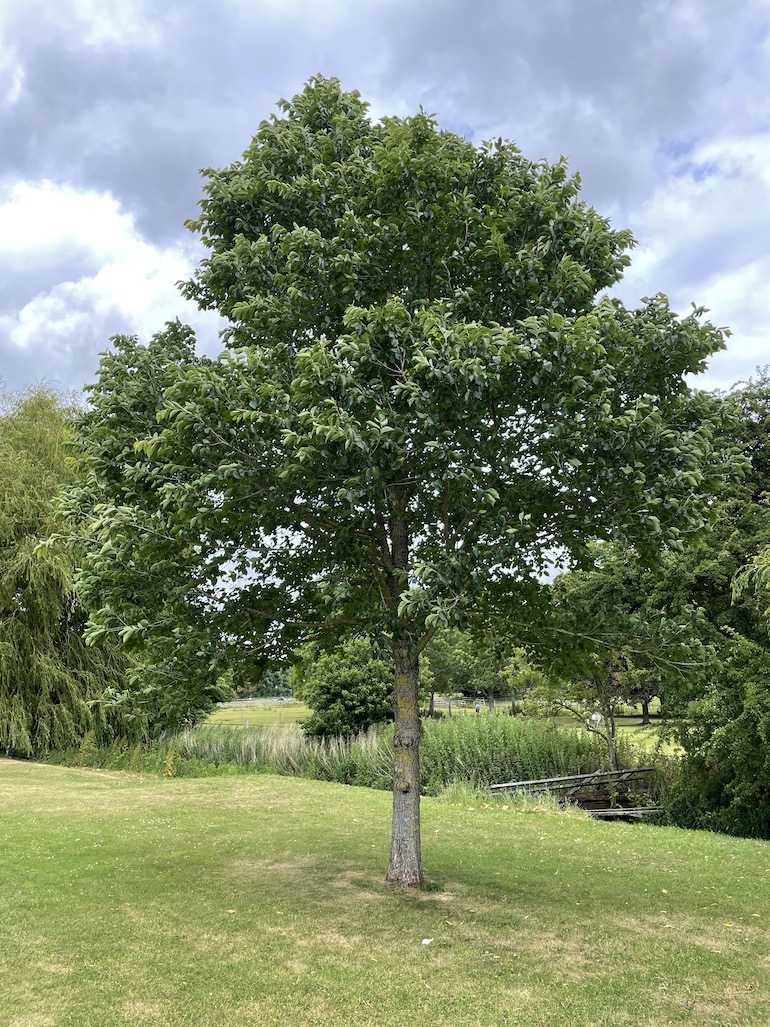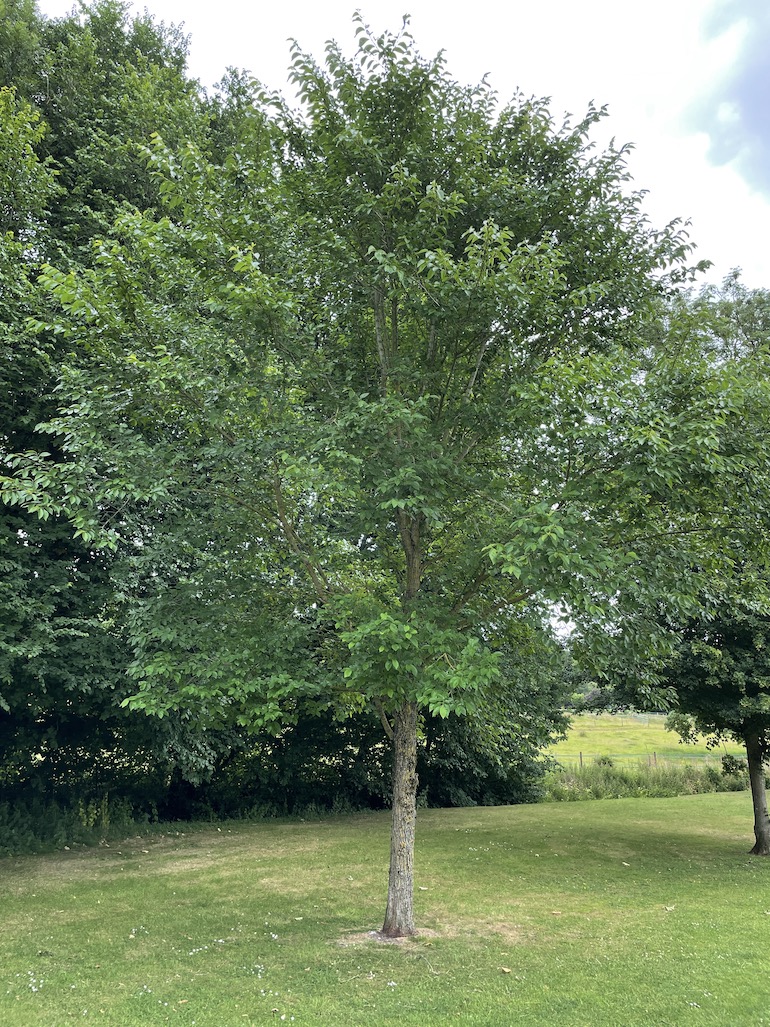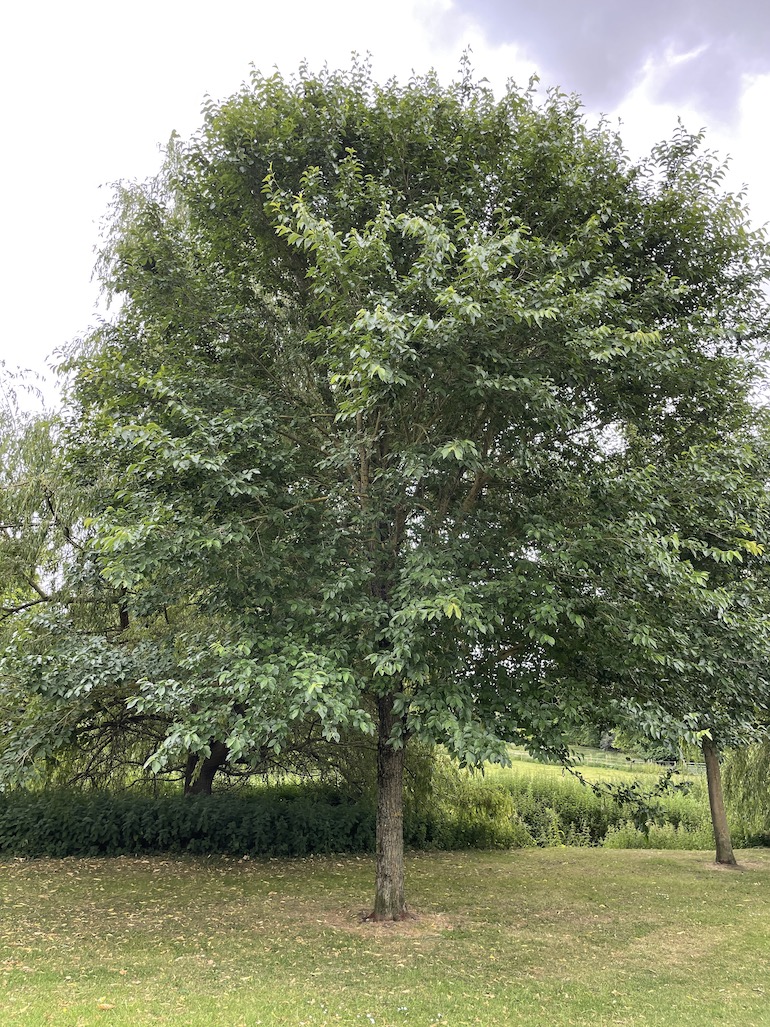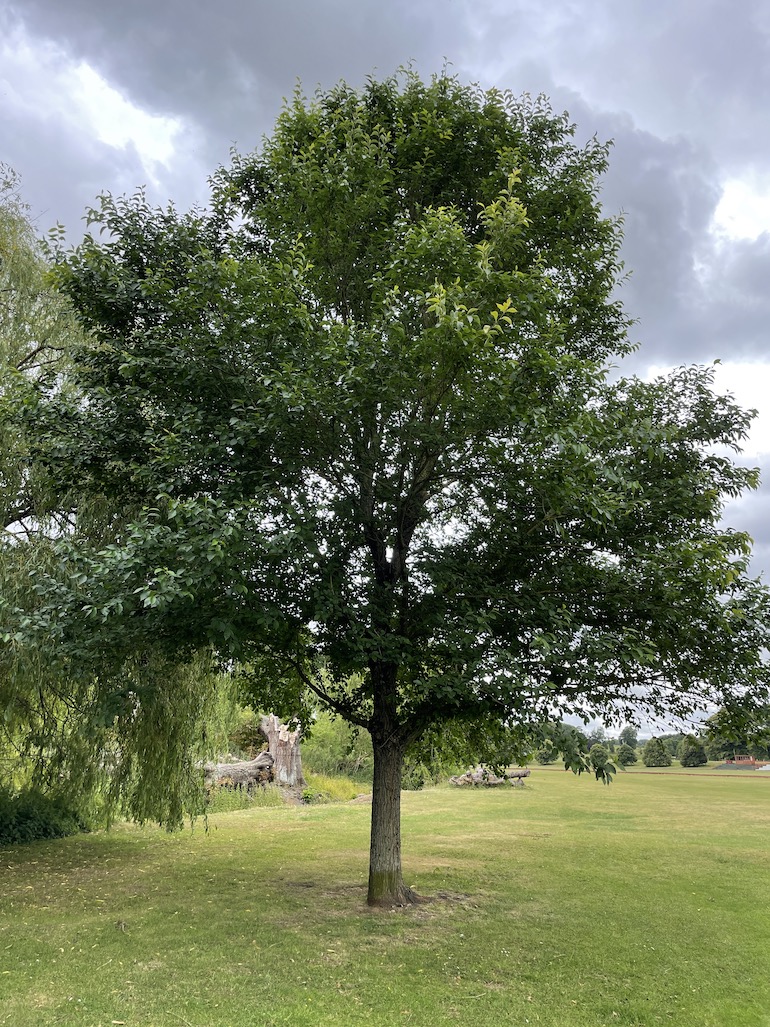
Following on from the successful conference on the future of the Elm tree at Kew I decided to go and check on the progress of 15 Ulmus New Horizon that I was involved in planting in Tidworth in 2009 during my role as Tree Manager for Aspire Defence Services Limited. They were purchased from Hillier Trees and were one of the first commercially available resistant Elms to Dutch Elm Disease (DED) in the UK at that time. The Ulmus New Horizon should grow into a medium to a large-sized tree and therefore is hoped will help restore the landscape with larger dominant trees once again following on from the loss of the majority of mature Elms back in the 1970s so was a long-term aspiration.
Post planting flooding in 2013
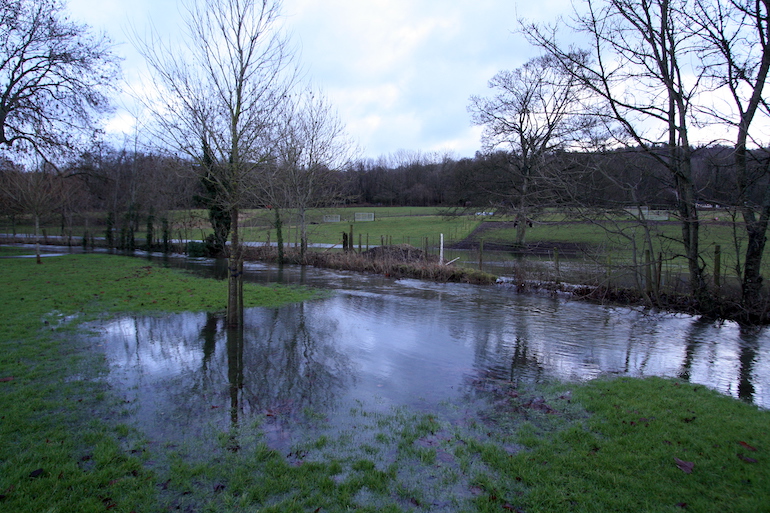
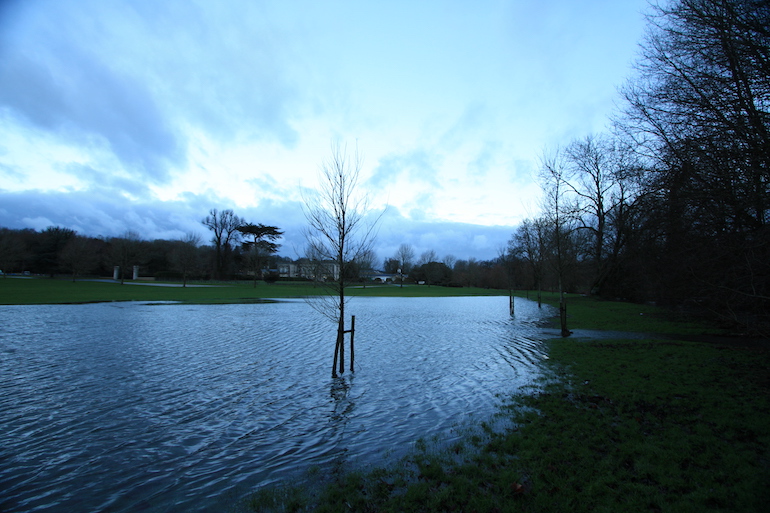
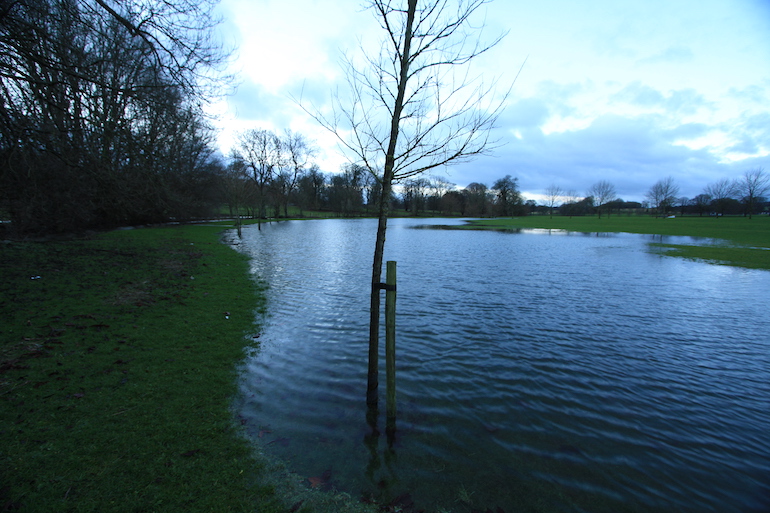
They have proven to be very robust as a resistant Elm tree and coped admirably with the flooding in 2013 / 2014 when their rooting area was submerged for many months over the winter period with no visible impact on the development of the trees. They were standard nursery stock of a 10-12cm girth at the time of planting as this was the only size available at that time and there is a very limited range of resistant cultivars and sizes currently available within the UK.
Dutch Elm Disease in surviving Elms
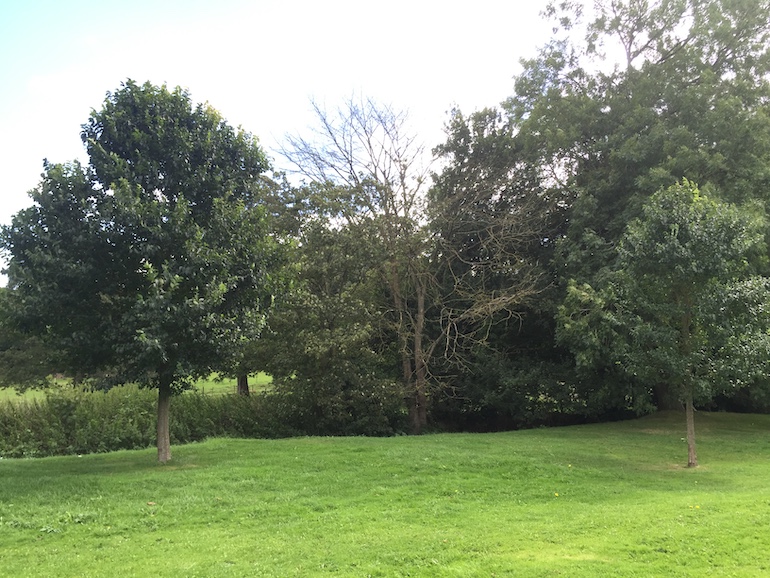

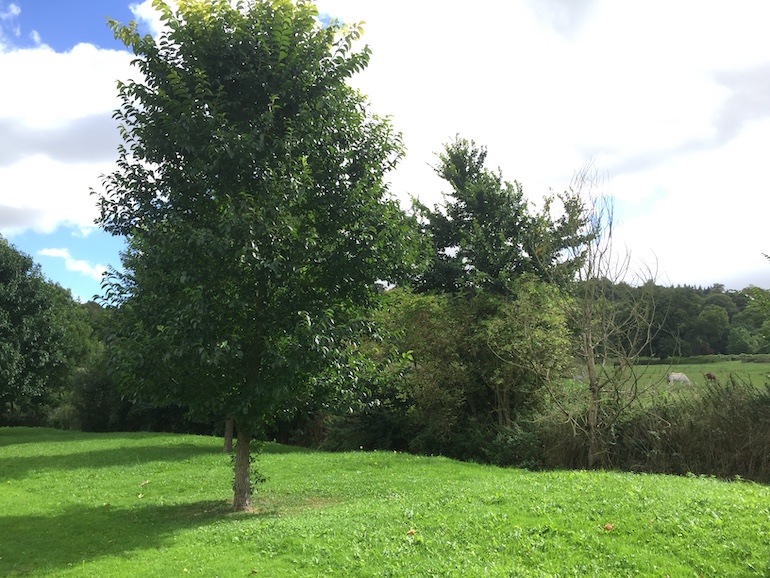


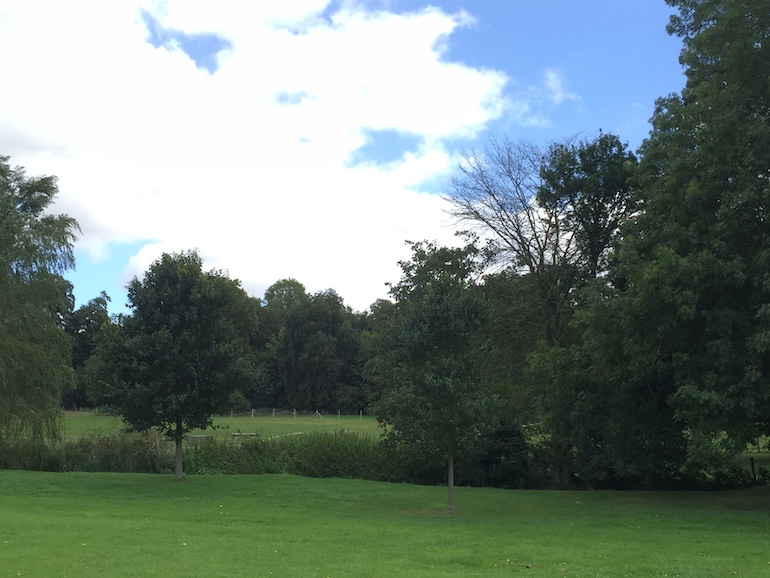
The location for the planting of the 15 Ulmus New Horizon was on the grass open space adjacent to the River Bourne in Tidworth. Elm is an important tree species in this location as the Elm is host to the rare White-letter Hairstreak Butterfly. The resistant trees were planted in close proximity to an existing collection of surviving Elms with both Ulmus minor and Ulmus glare within the river bank hedgerow, some of which were succumbing to DED when seen in 2016 however the majority appear to be exceedingly healthy in 2022 this year.
Landscape context 2016
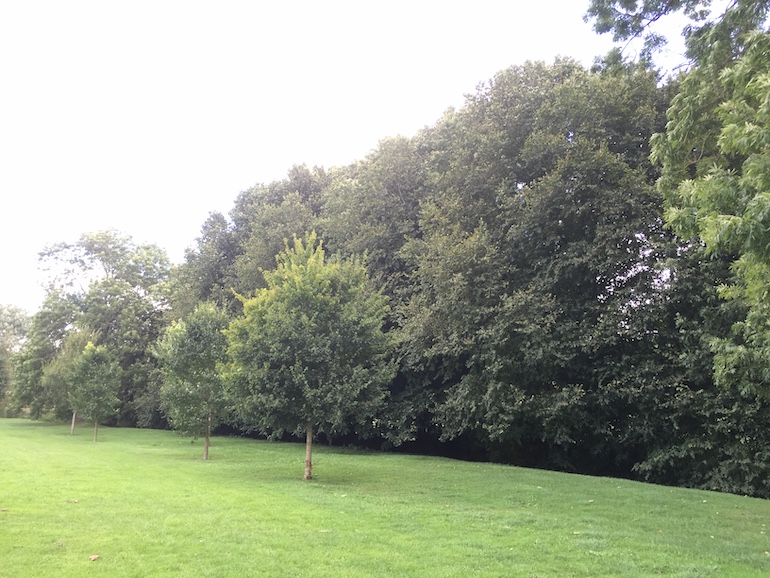


The trees have grown well in the 7 years post-planting when last seen in 2016 and have here they are now in 2022. They are growing on chalk soil so have proven their lime tolerance as well as their ability to cope with wet and very waterlogged soils. They are also very hardy and have coped with many a storm in recent years as well as drought conditions in more recent years.
Landscape development June 2022

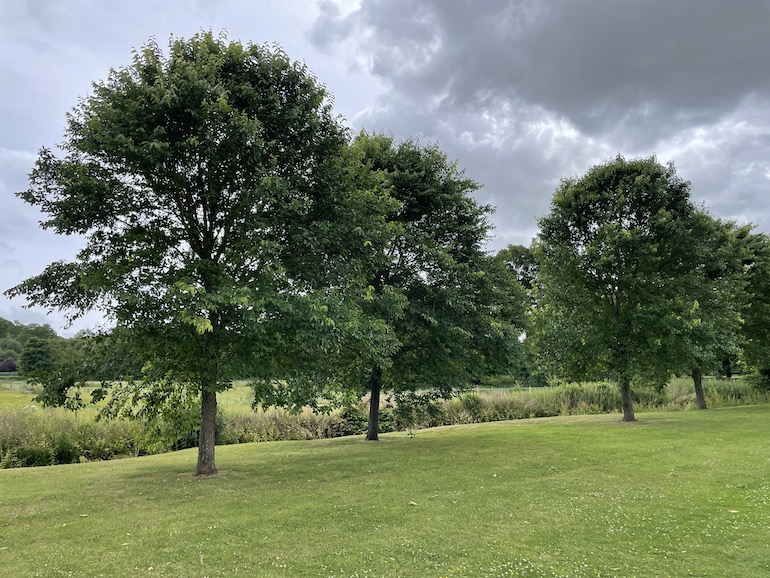

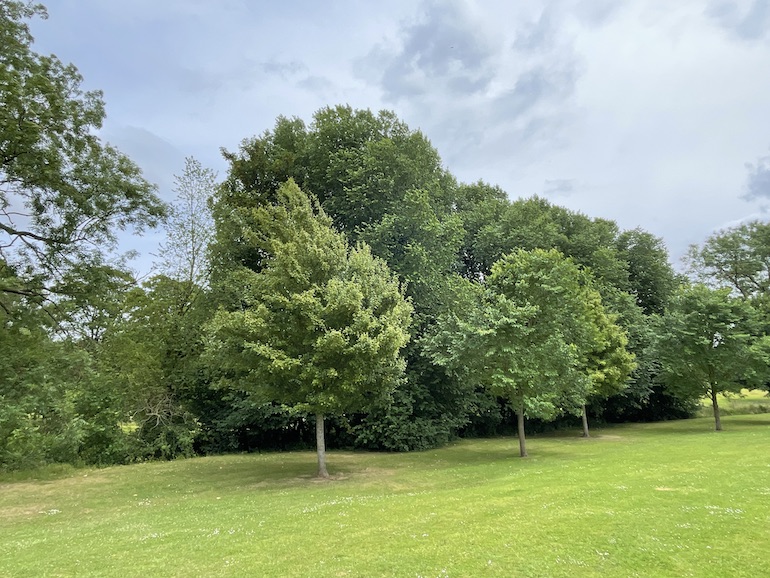
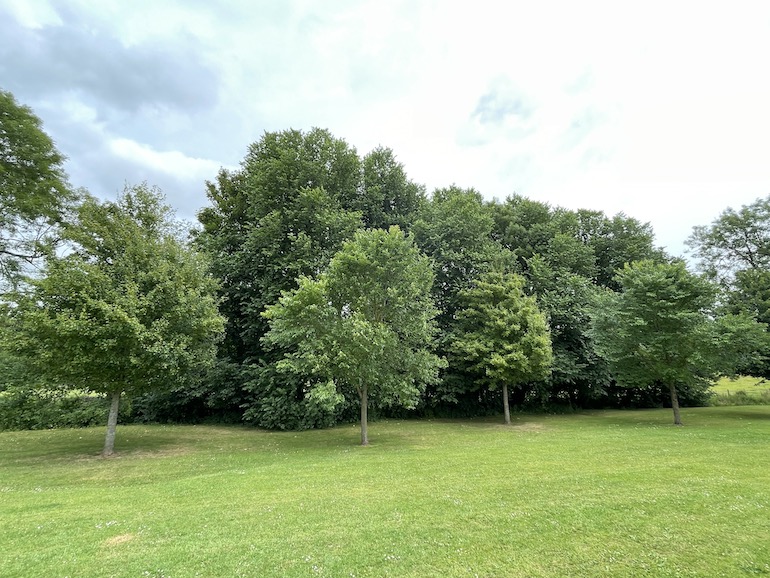
The overall condition of both the Ulmus New Horizon and the existing collection of Ulmus minor on the river bank is very good, with overall good leaf colour, foliage density and general health and condition. The resistant Elms have continued to develop well with good extension growth and have wider canopies and a well-developed branch structure.
Ulmus minor observations

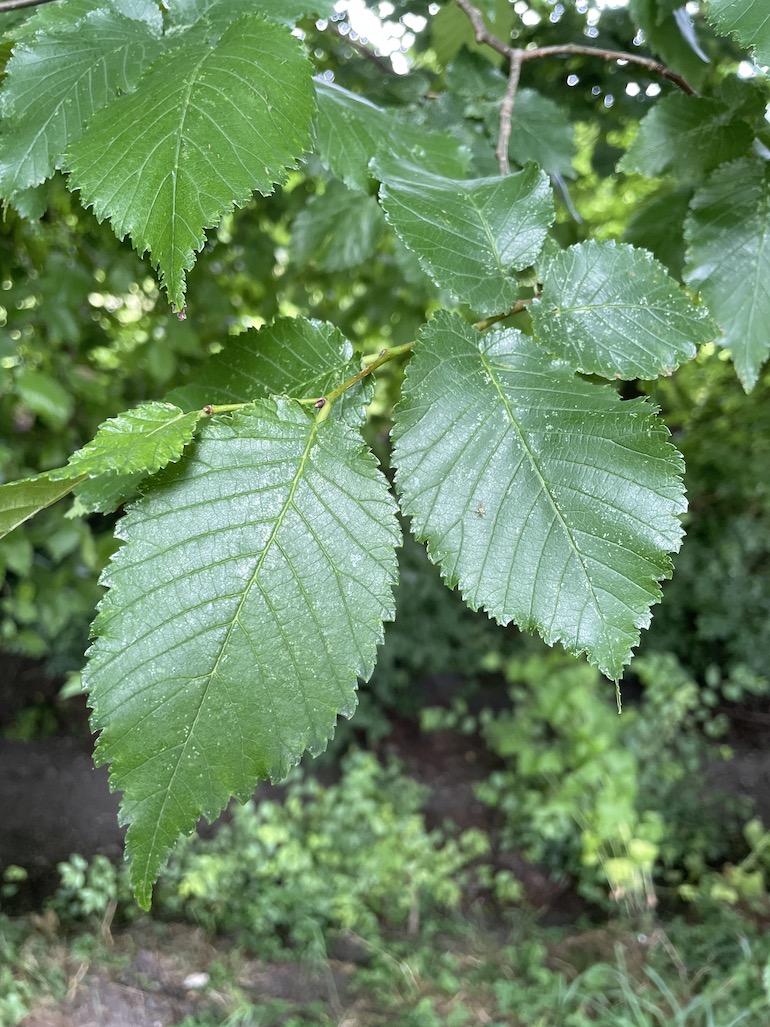
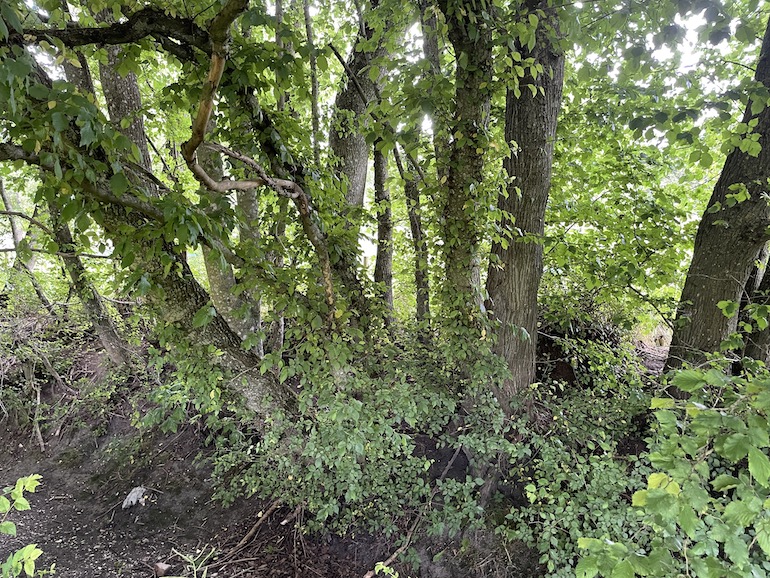
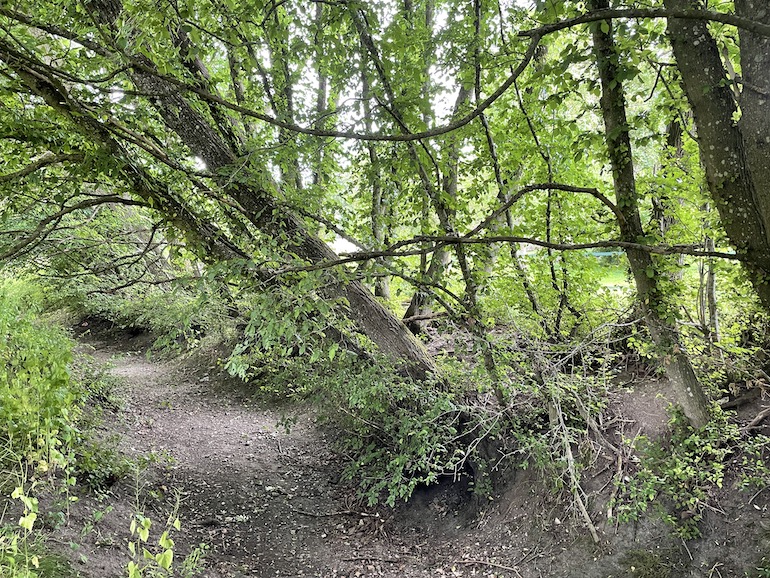

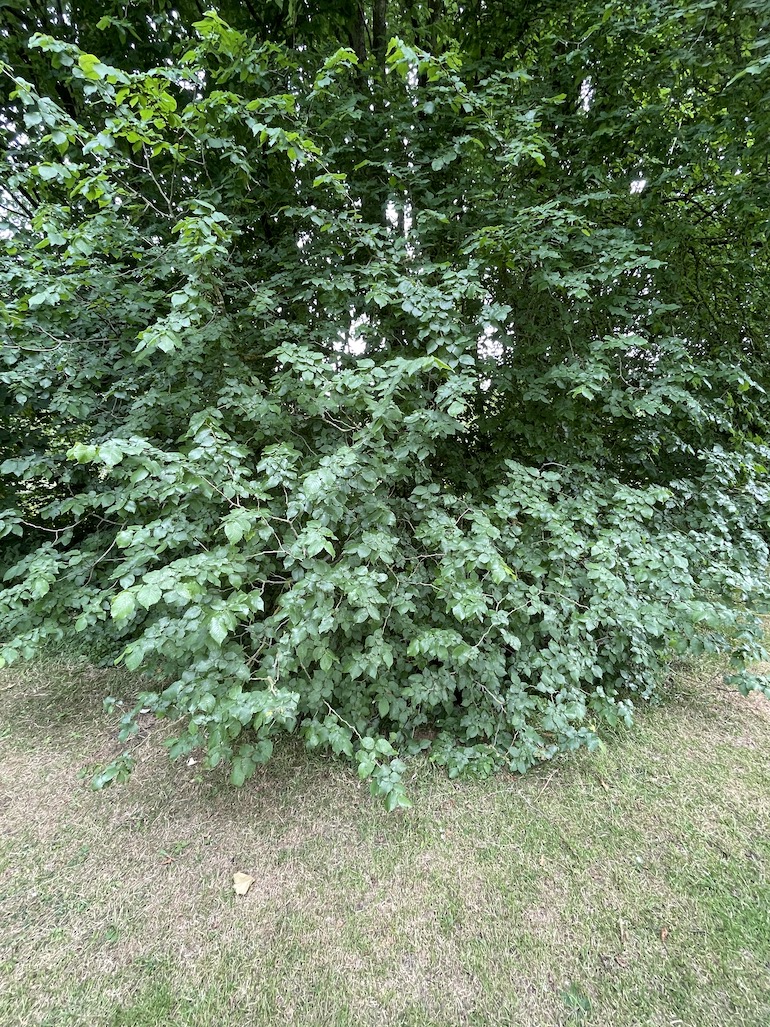

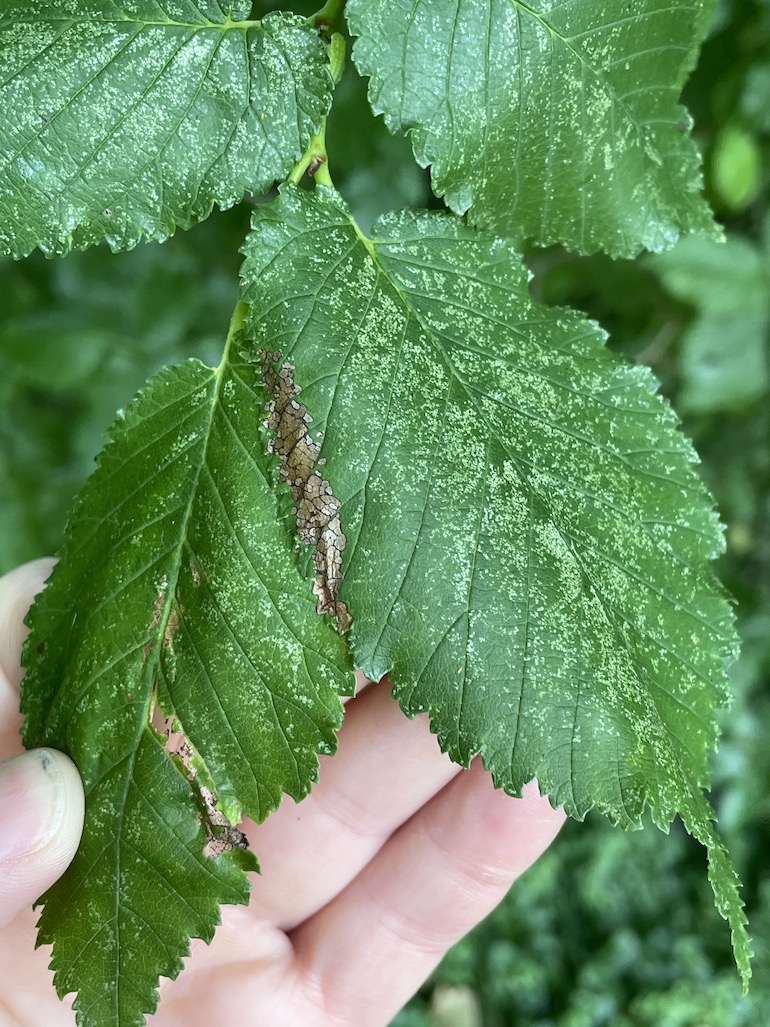
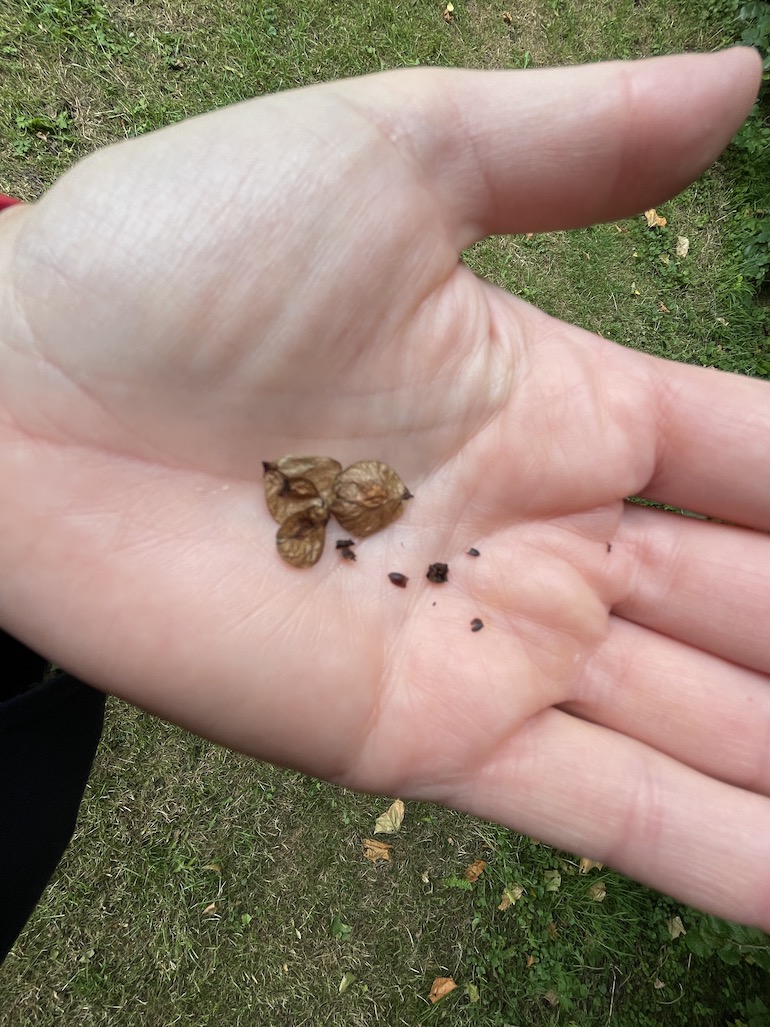


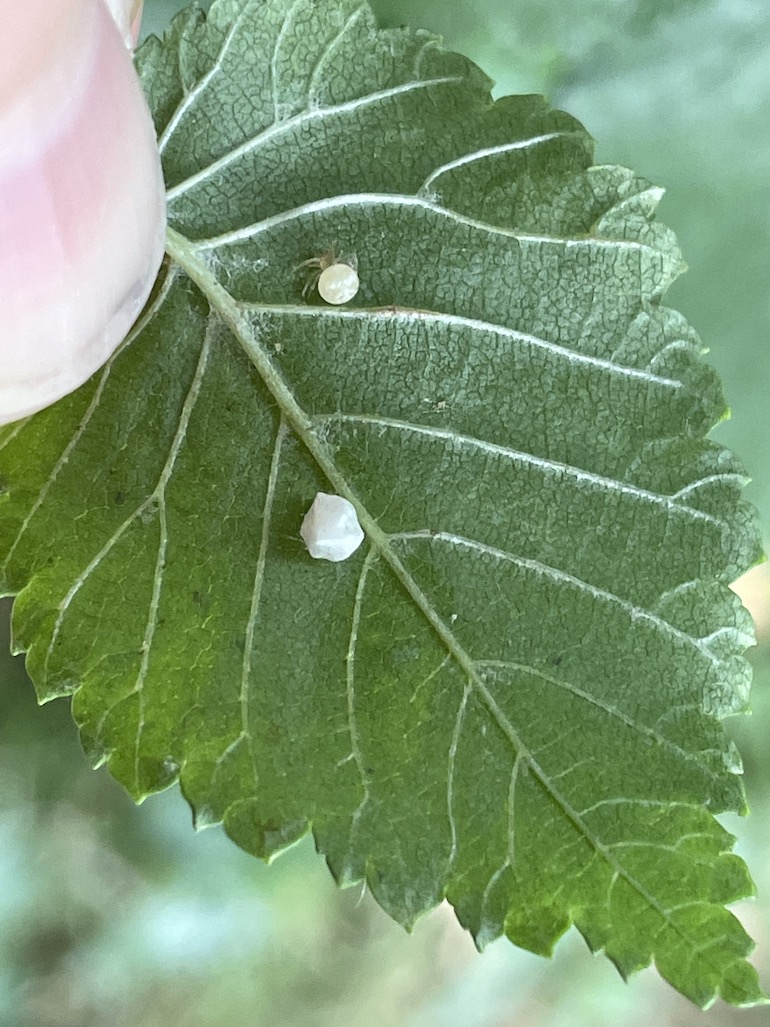







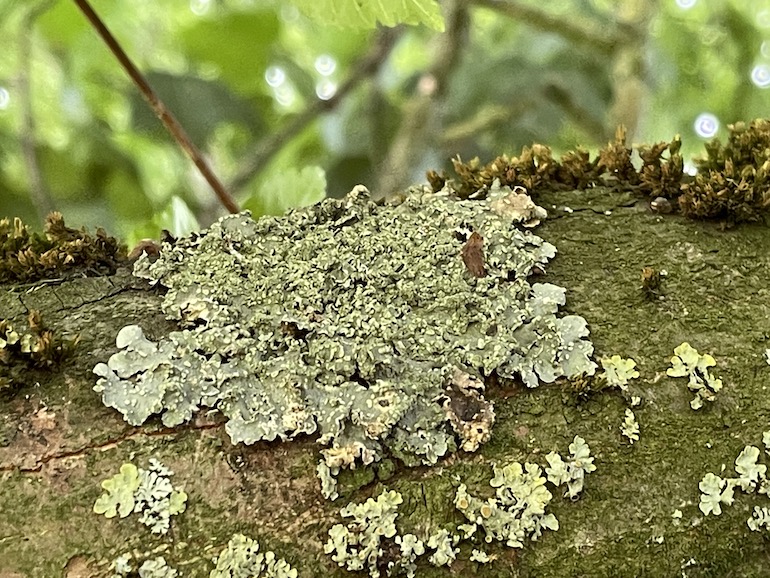

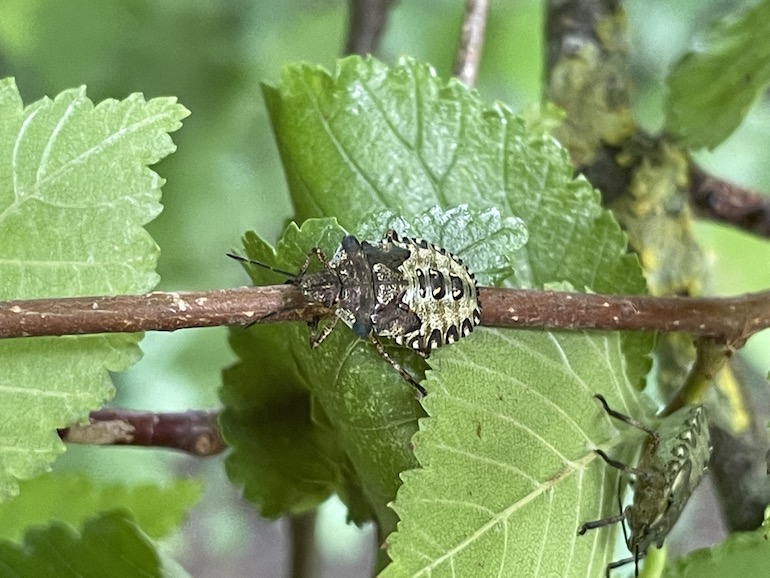



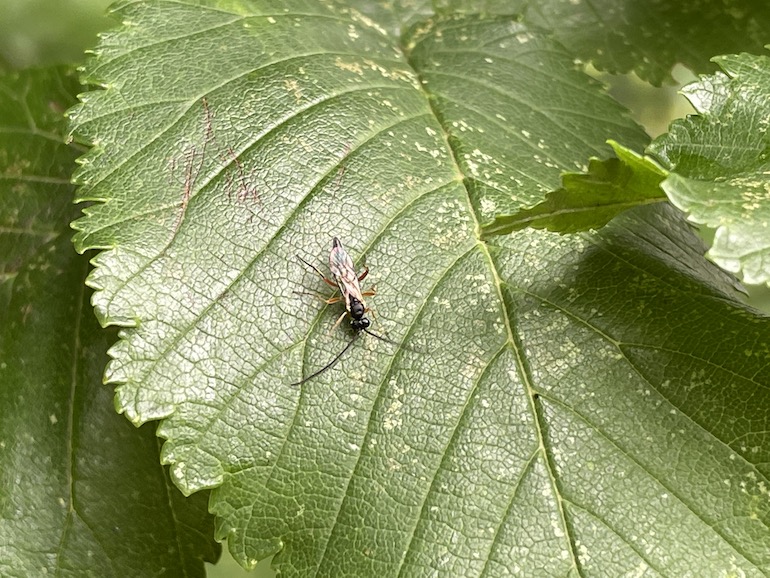


It was great to observe so many insects on the leaves of the Ulmus minor from flies to moths to shield bugs, Zigzag Sawfly as well as lichens, mosses, scale insects and many more things I have yet to identify.
Observations on Ulmus New Horizon
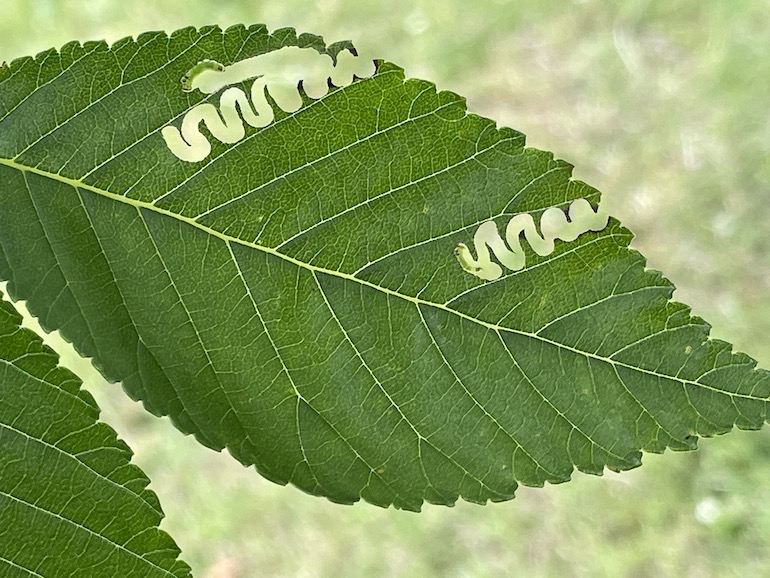
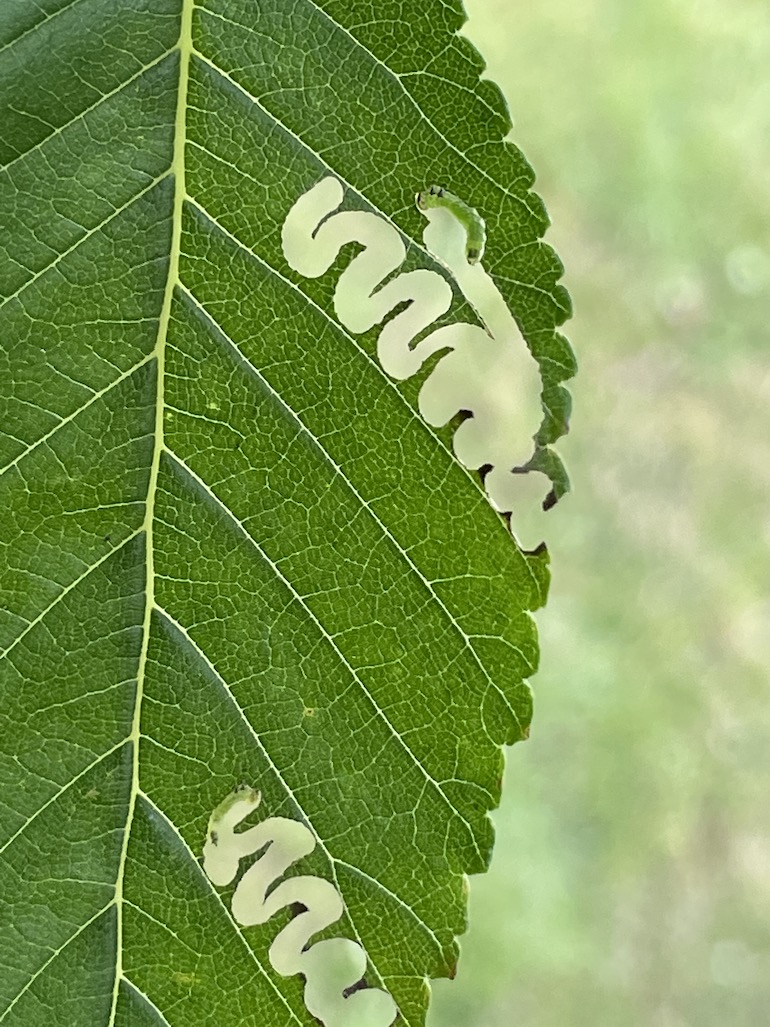
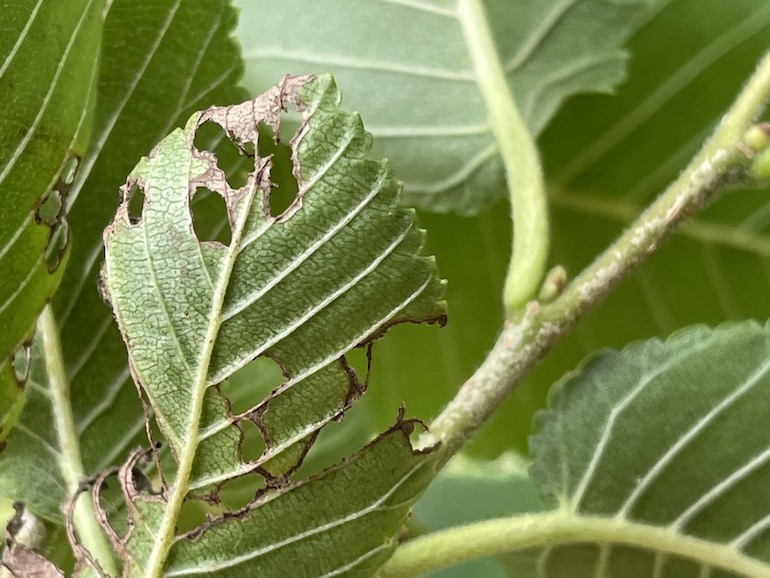
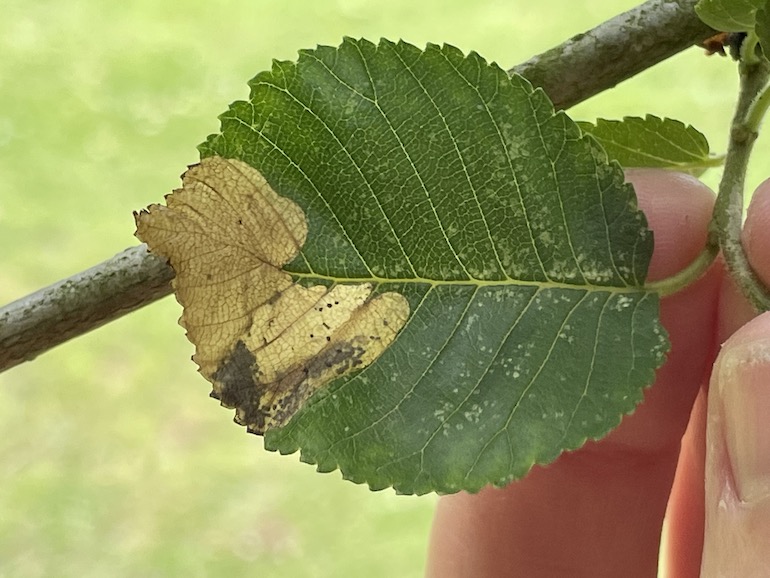


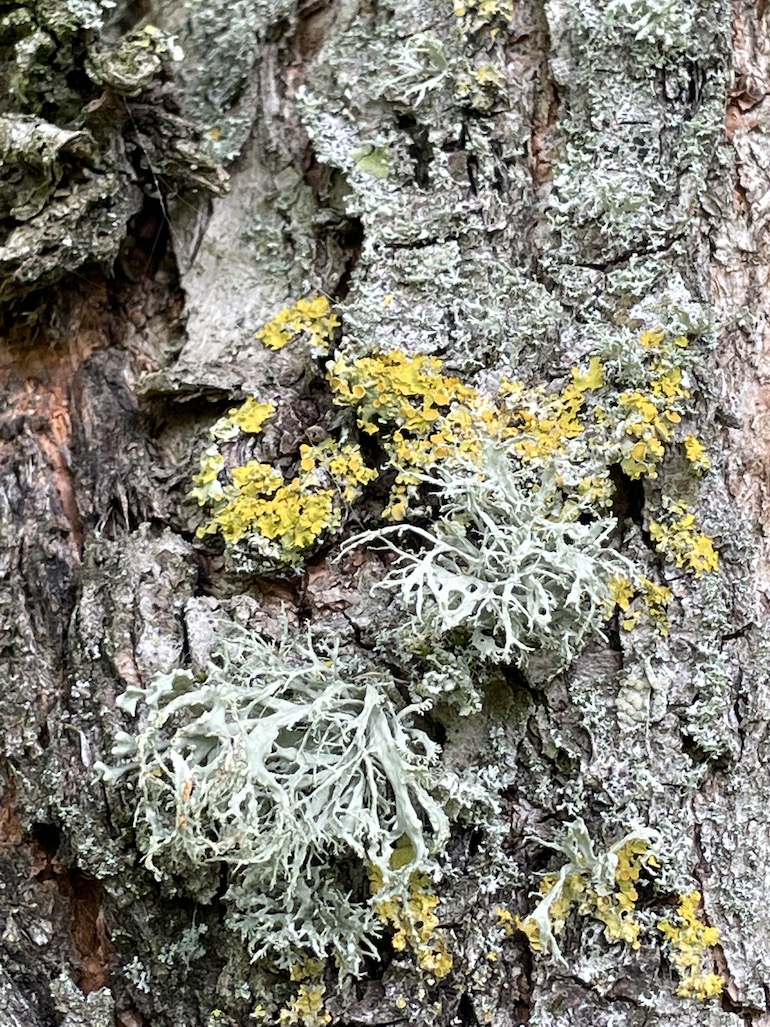
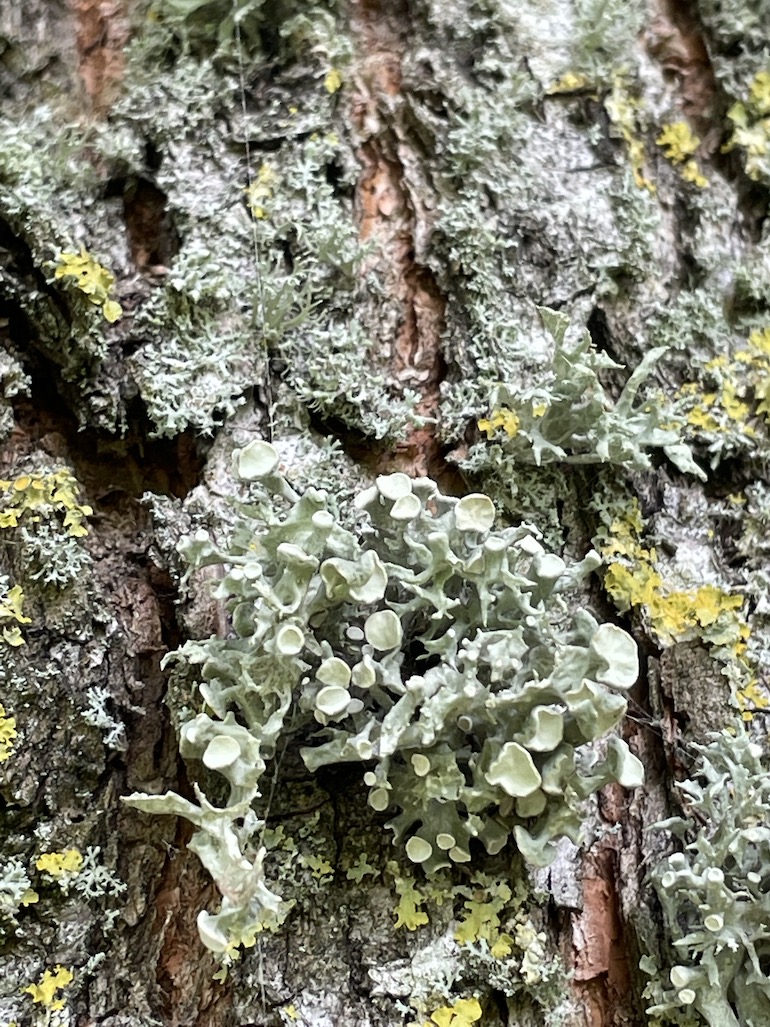
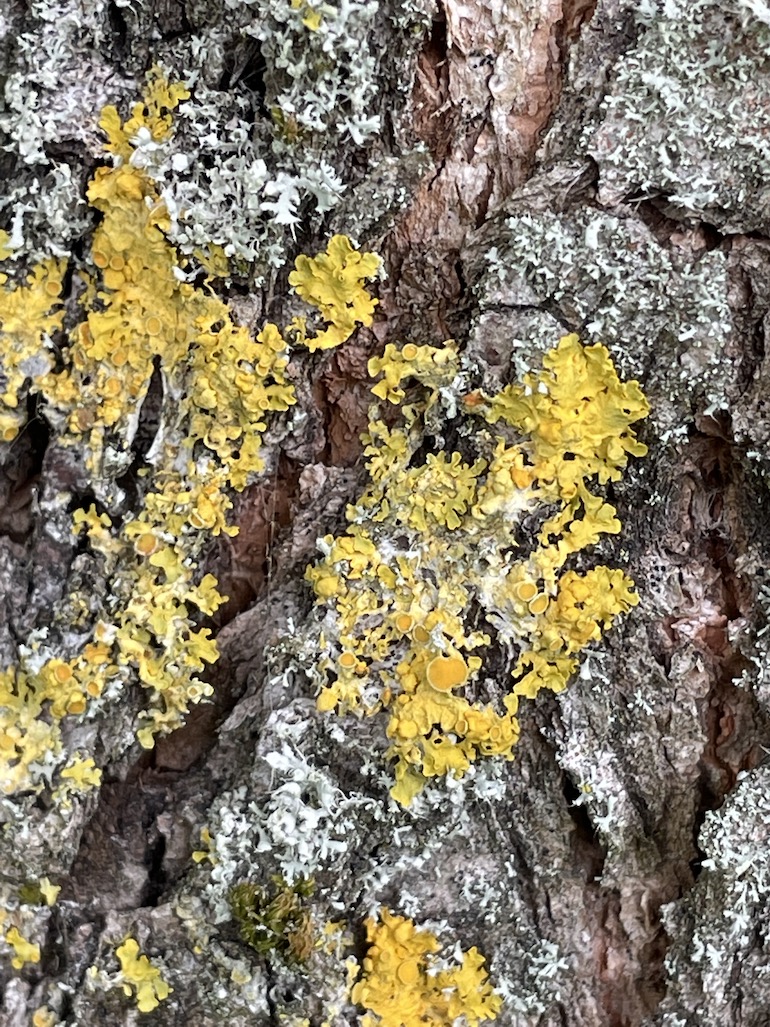
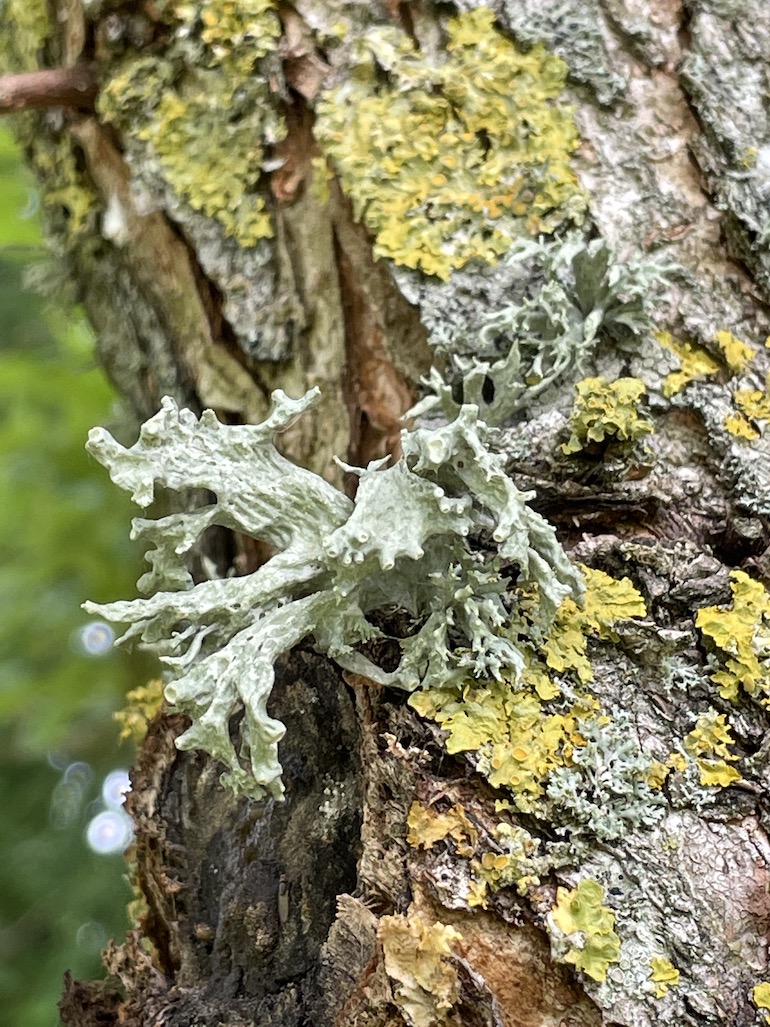

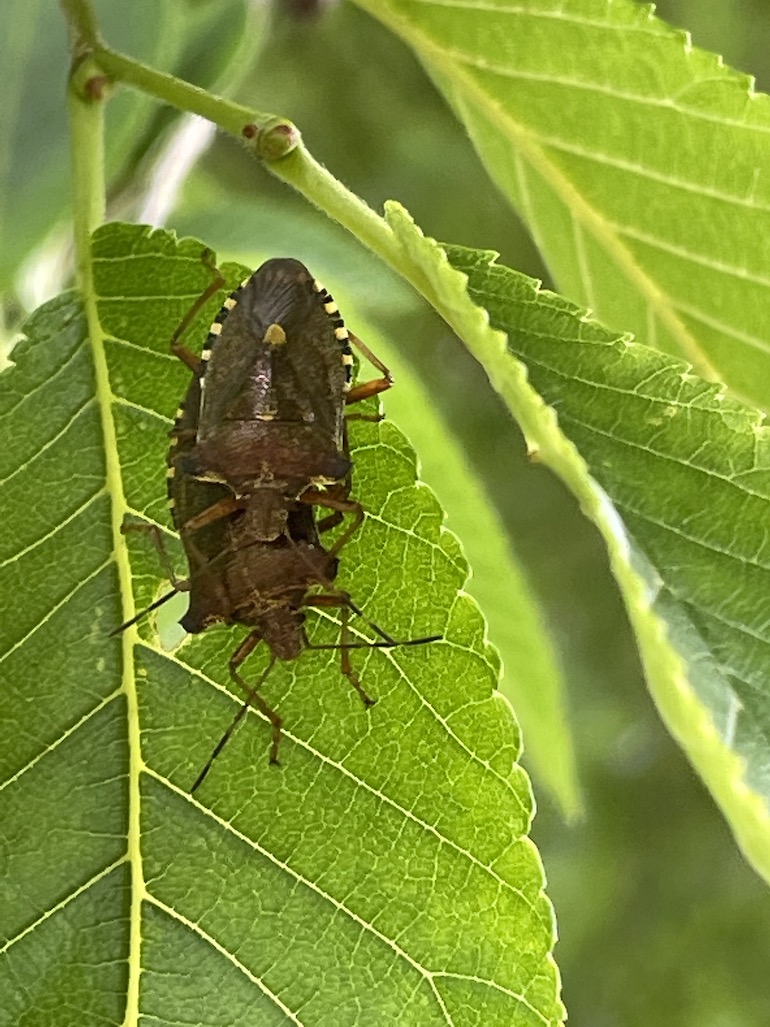



I saw a similar range of insects, lichens and mosses on the Ulmus New Horizon and hopefully as they age this will only increase in providing excellent wildlife as well as landscape benefits.
Foliage of the Ulmus New Horizon in 2016
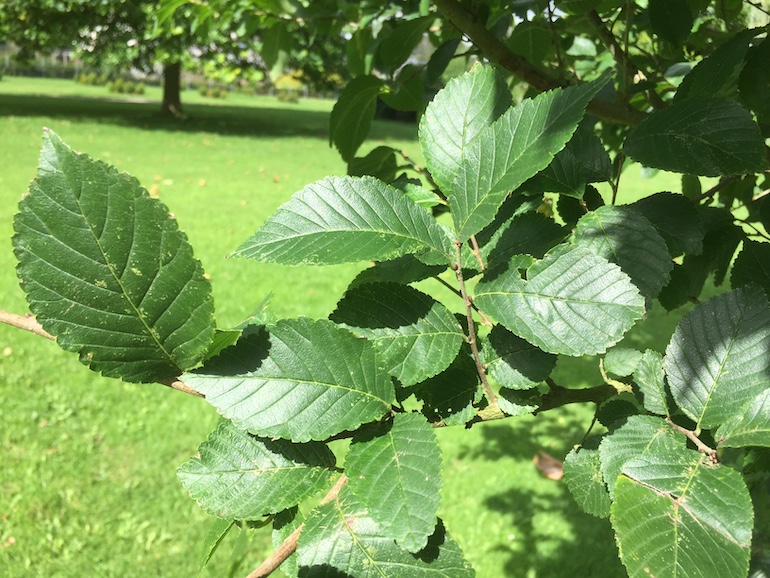

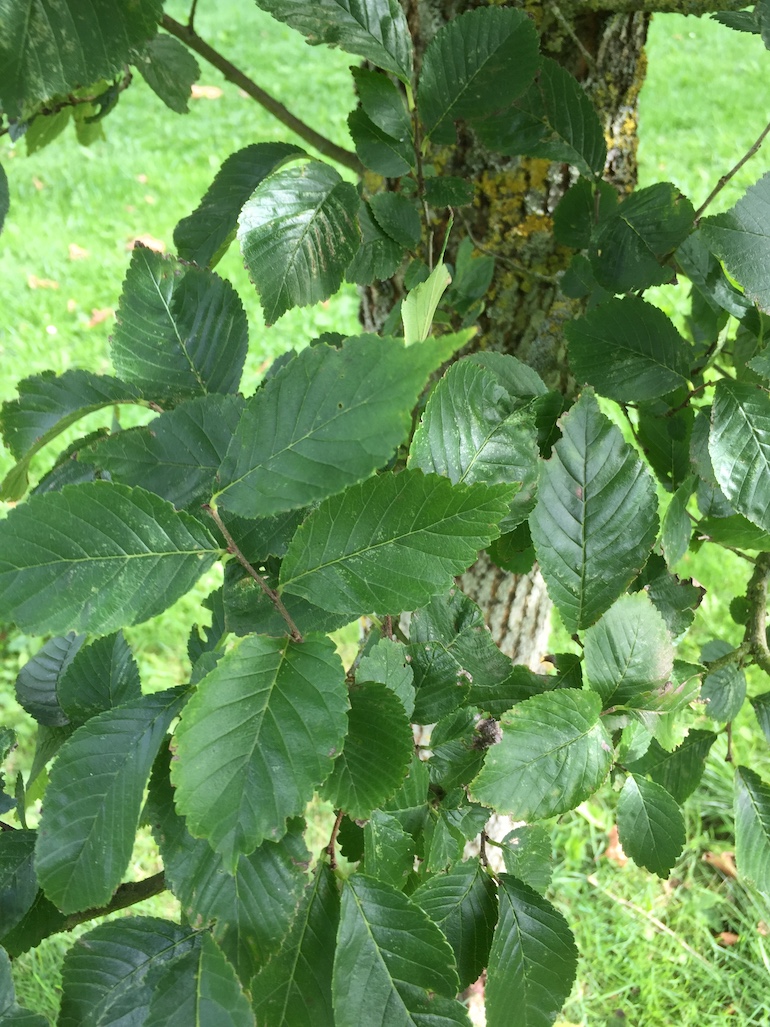
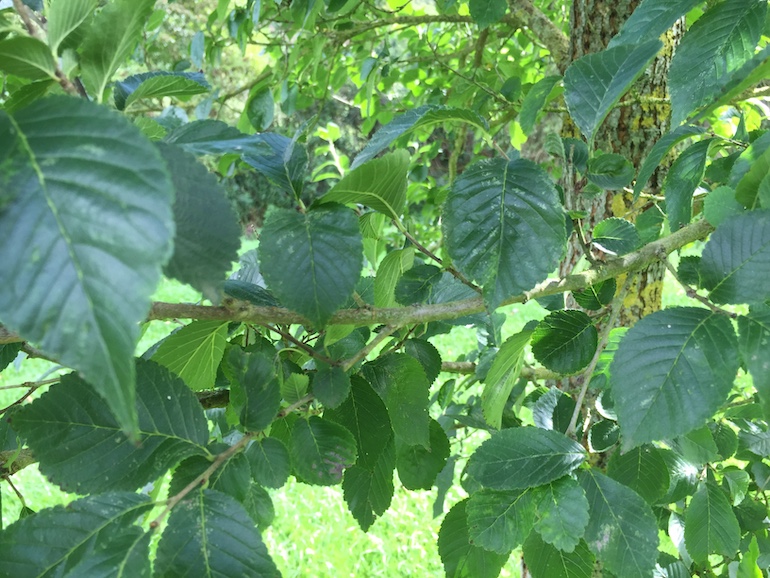
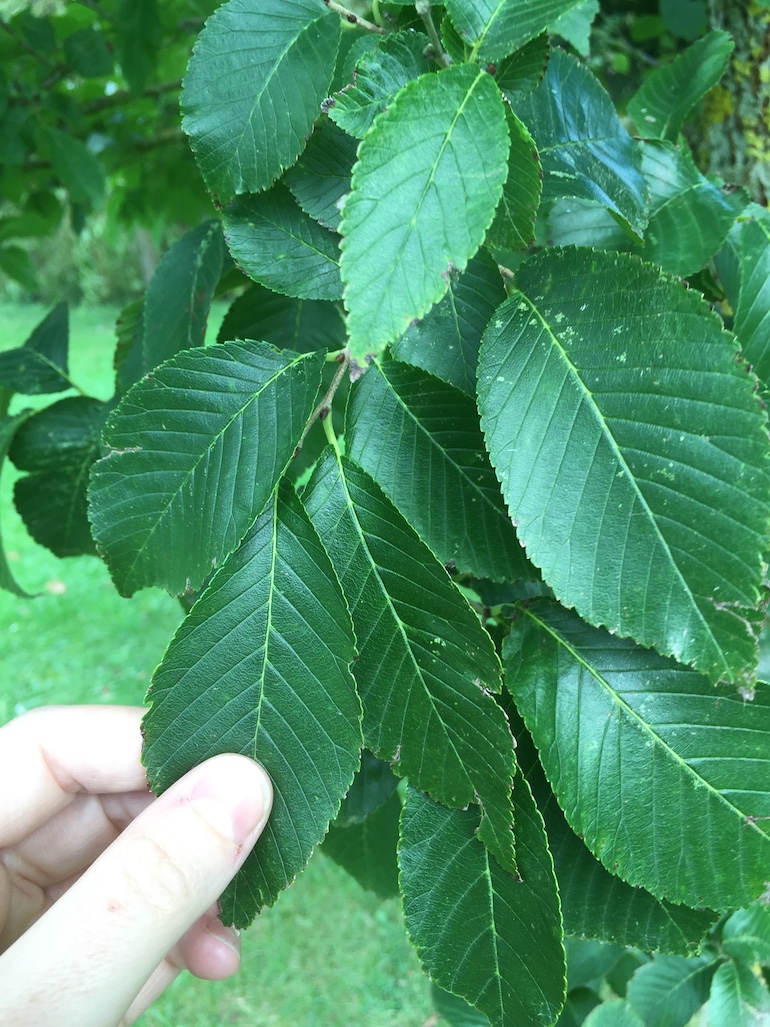



The foliage is glossy dark green with lighter green new shoots. The foliage is robust and firm, alternating leaf formation with some incidence of insect activity eating the leaves. Little change in foliage in June 2022 with exception of epicormic growth observed along branches as well as off old pruning wounds on the trunk and a few basal suckers from where the roots have been damaged through close-cut mowing and trimming.
Foliage observations June 2022


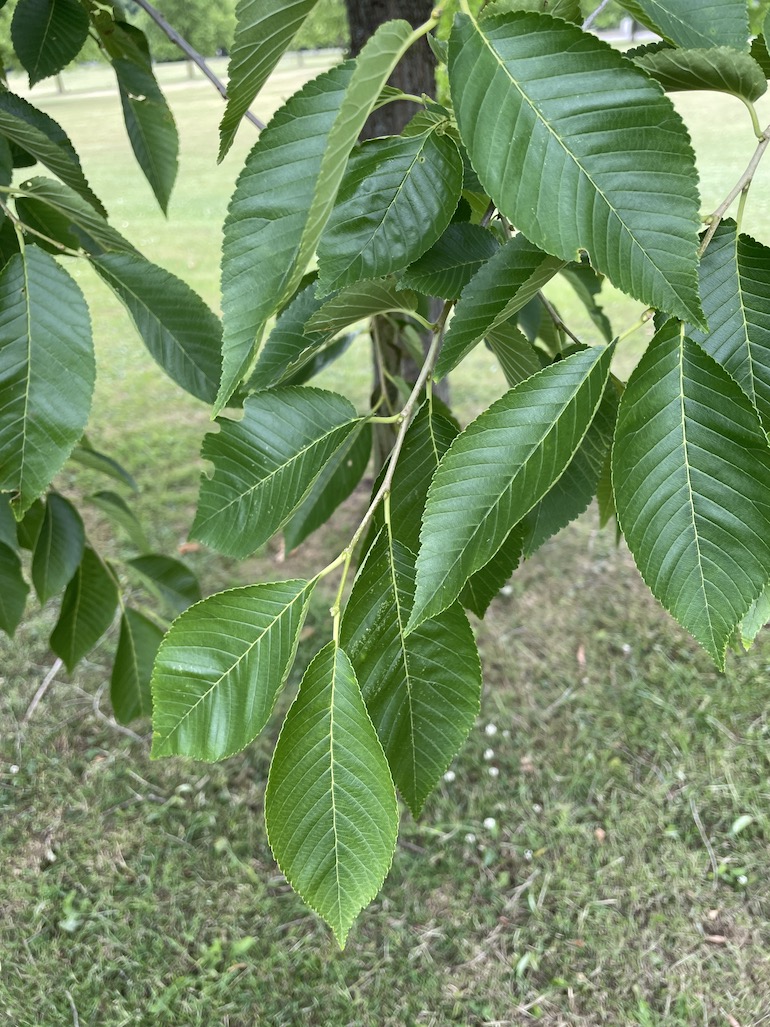


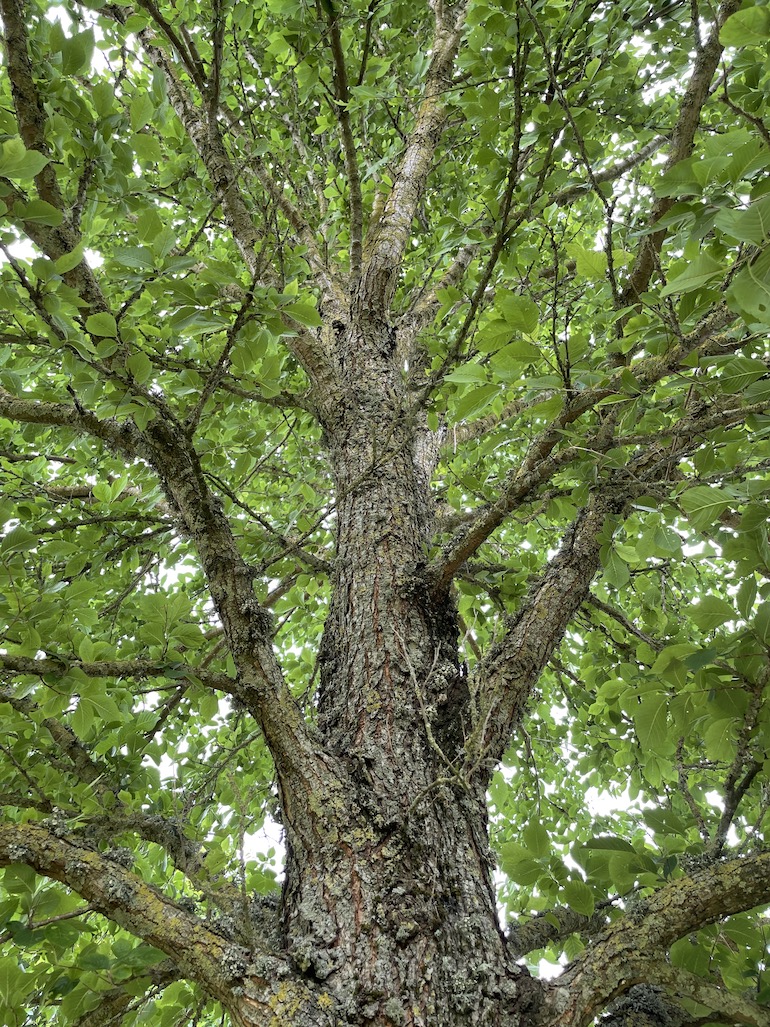
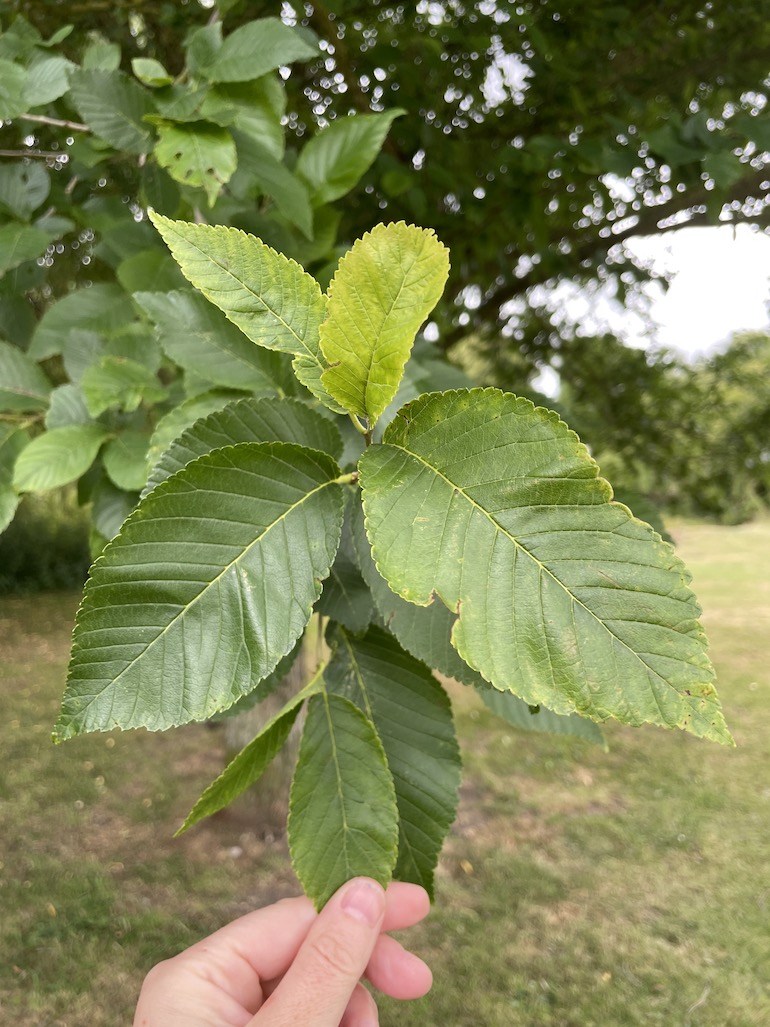
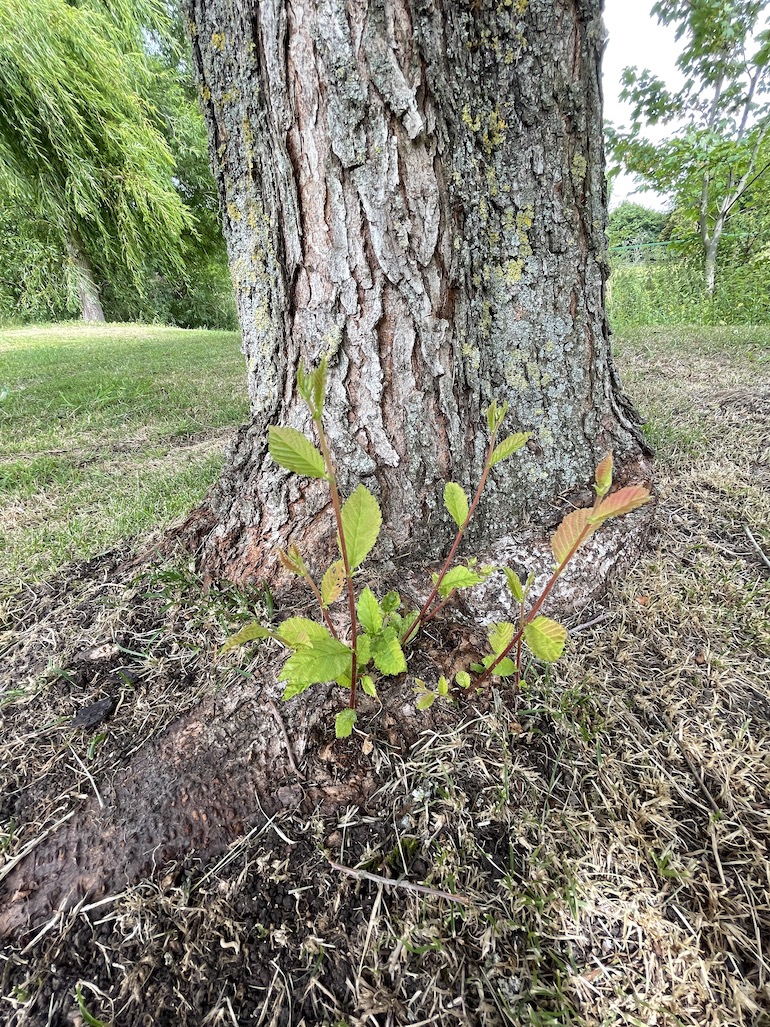

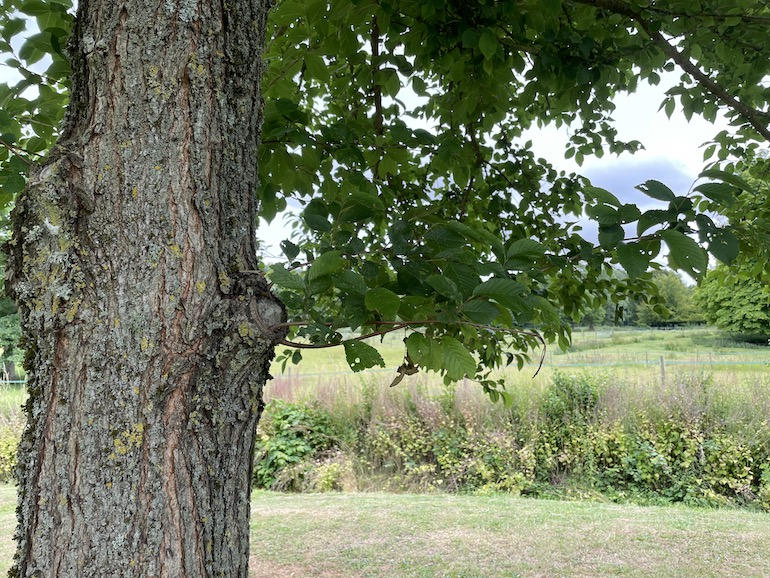
Bark and trunk diameter in 2016
The growth rate of the Ulmus New Horizon is very good and they have developed well since first planting in 2009, the bark has a very interesting pattern as well as being heavily colonised by lichens.
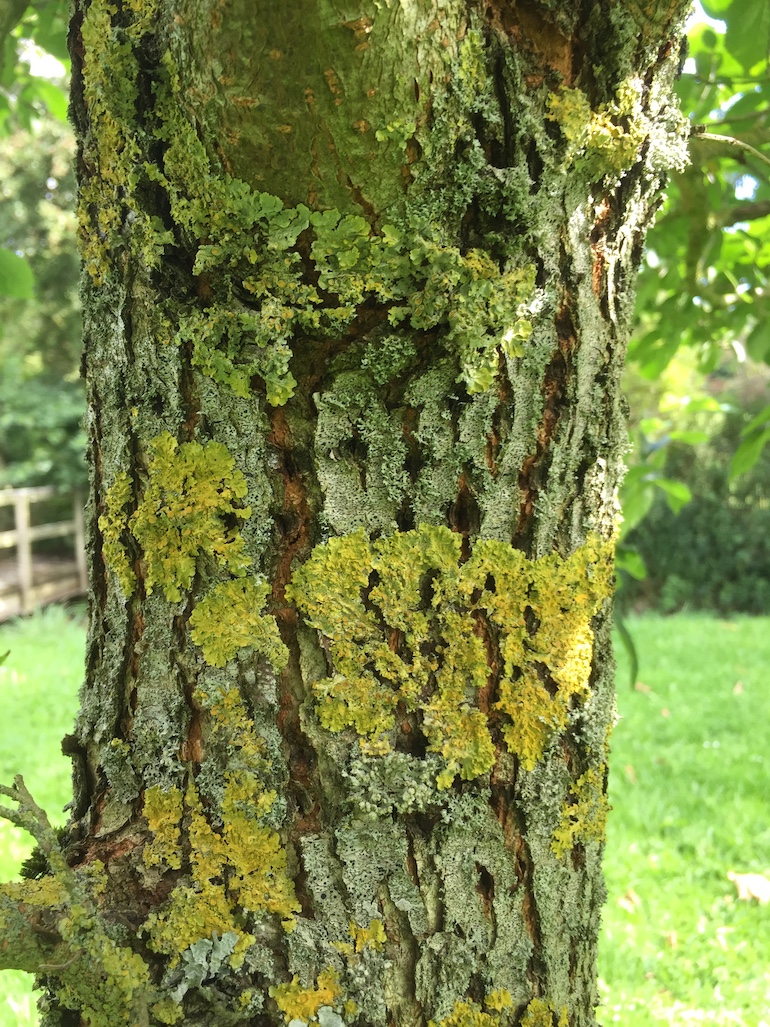

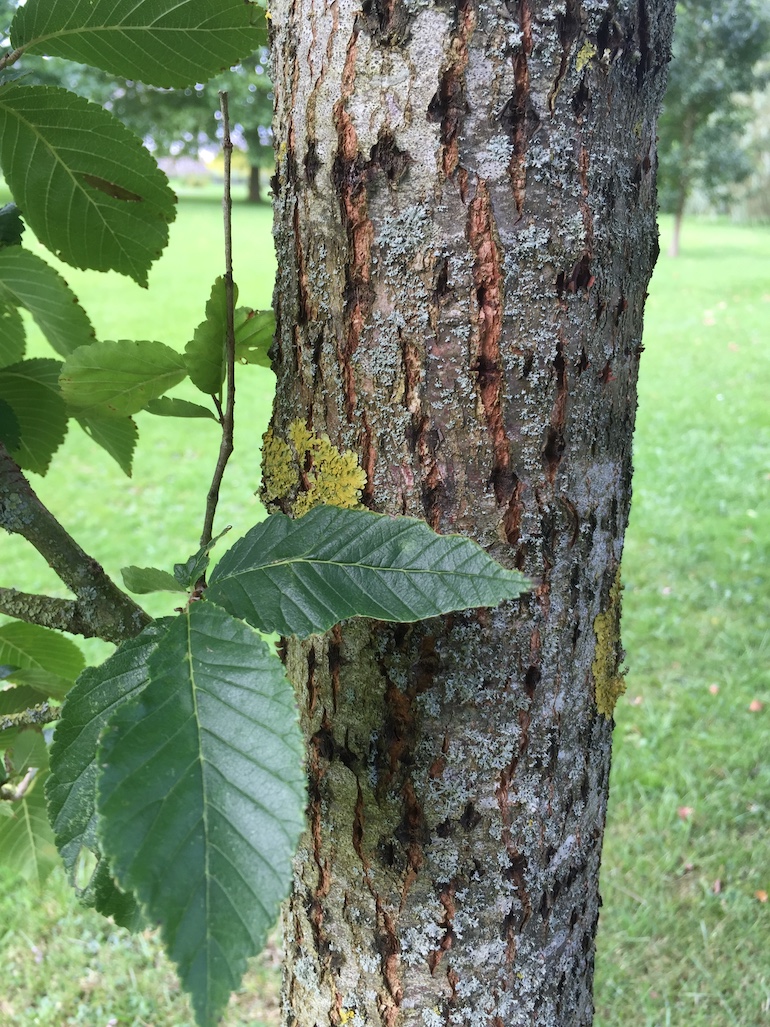


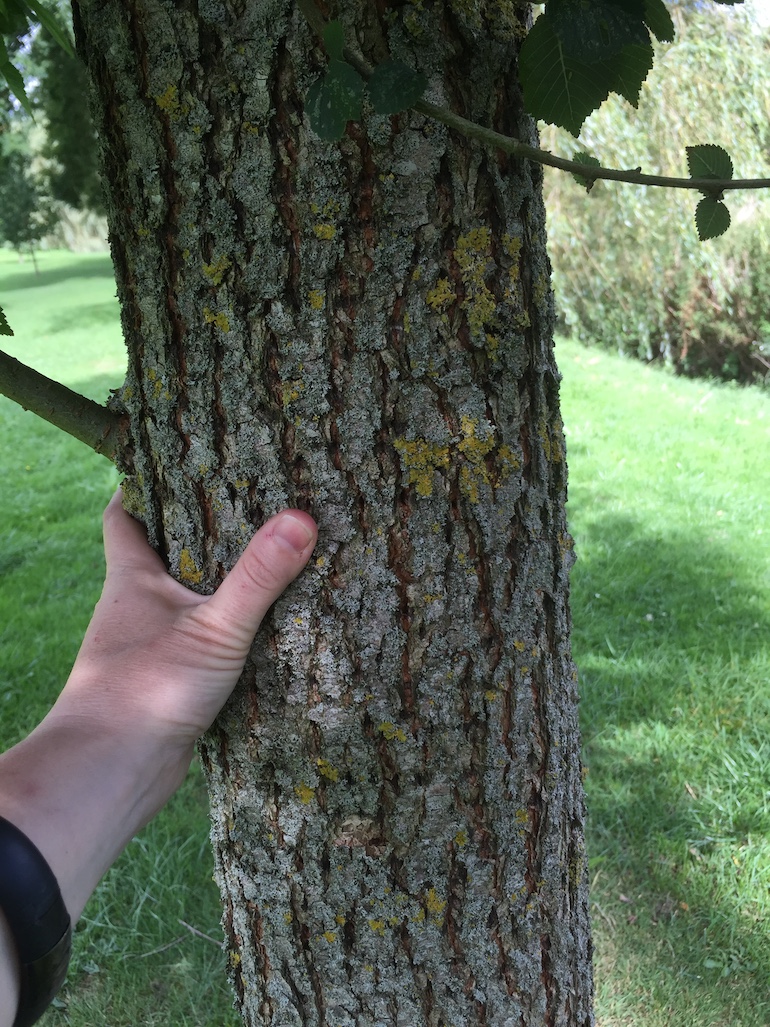

Trunk thickness developed June 2022
The stem diameters have increased and the average was between 25cm to 32cm in diameter, some have been crown lifted to remove the lower branches while others still have a low branching canopy.
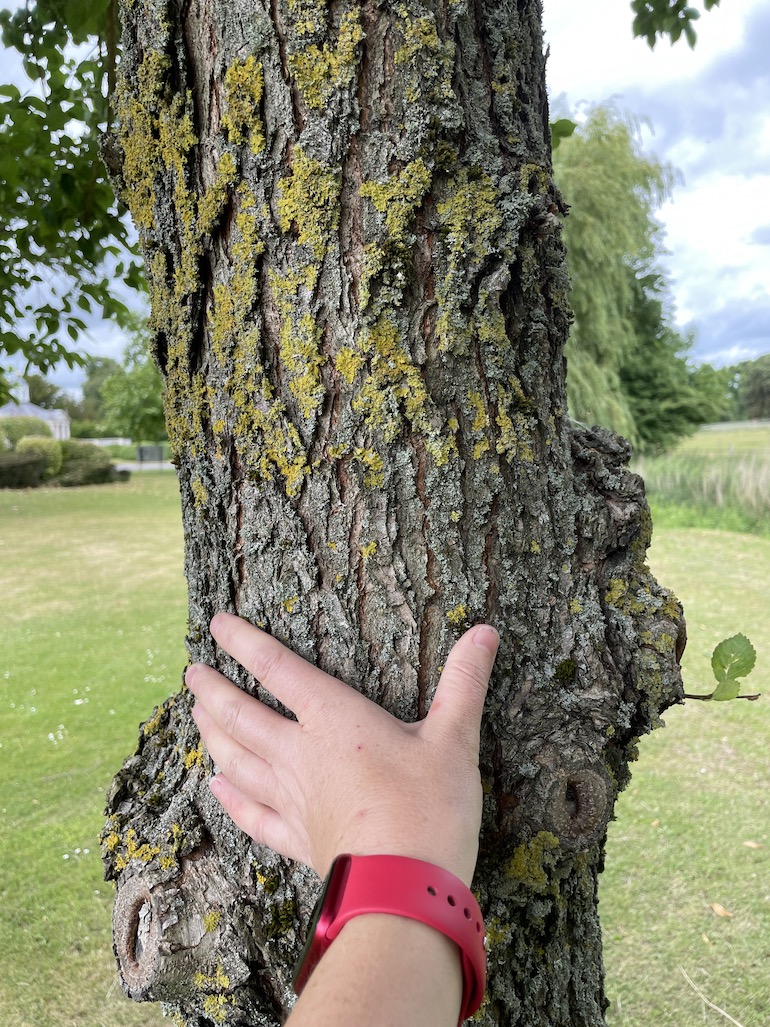
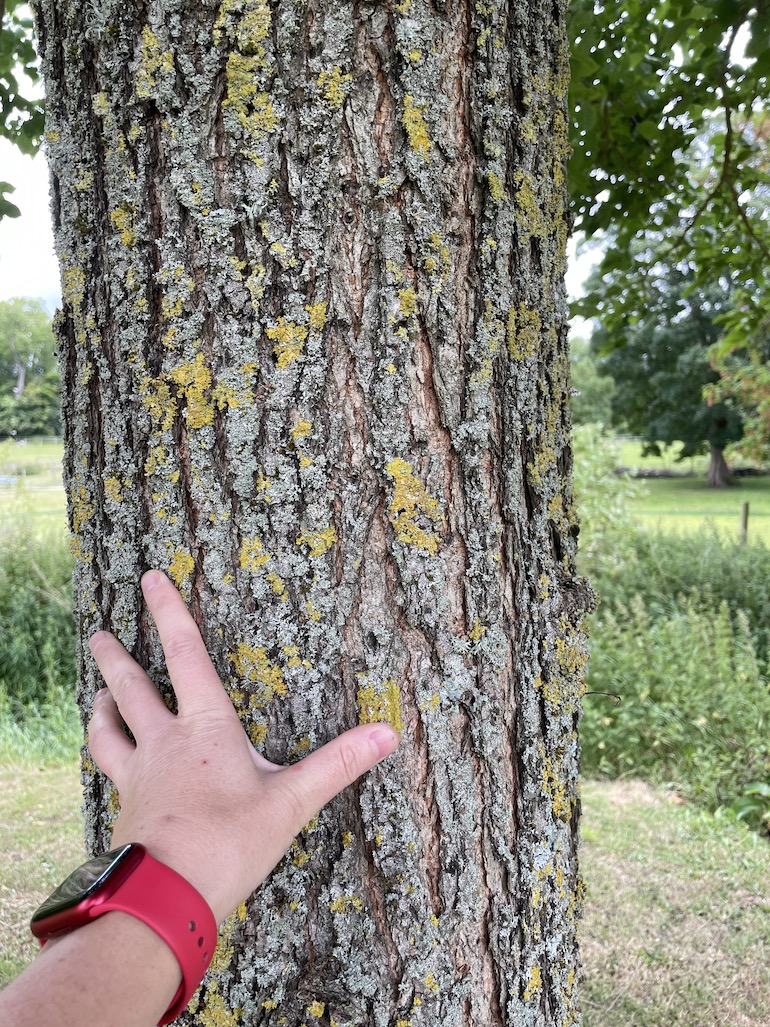

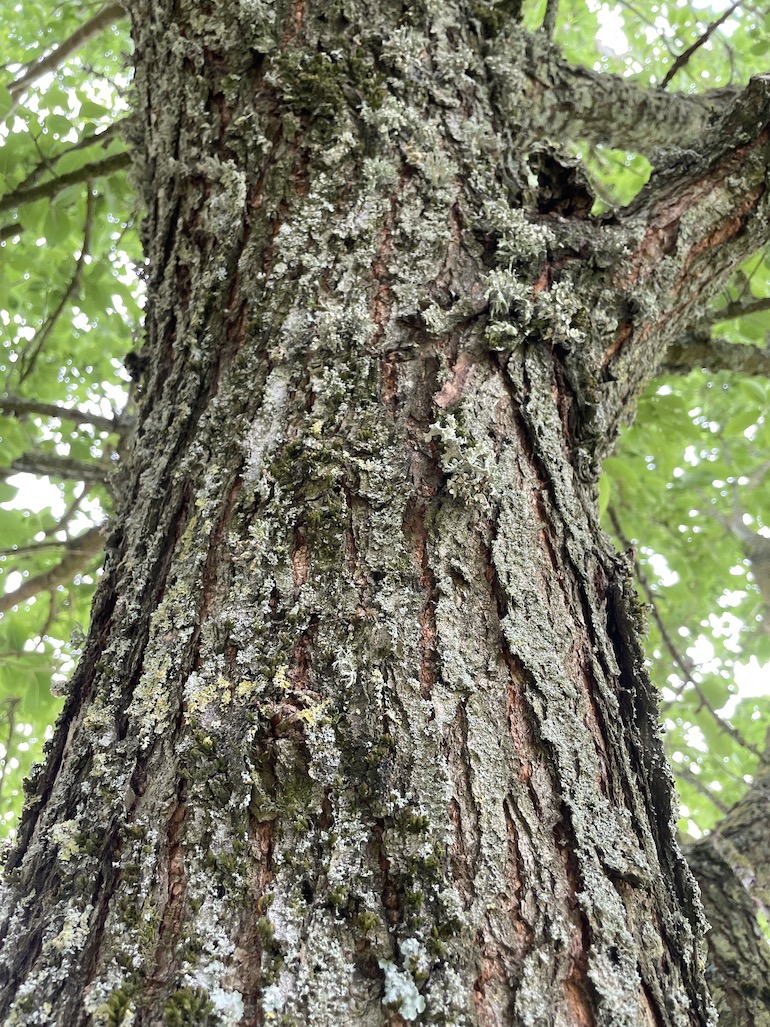
Ulmus New Horizon trees in 2016
The shape has started to become more rounded with age and it will be interesting to continue to monitor their progress and development over the coming years.

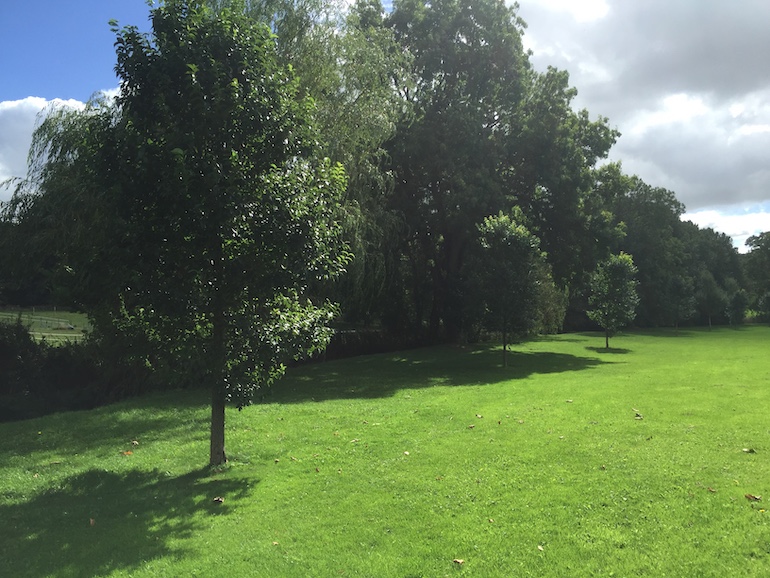
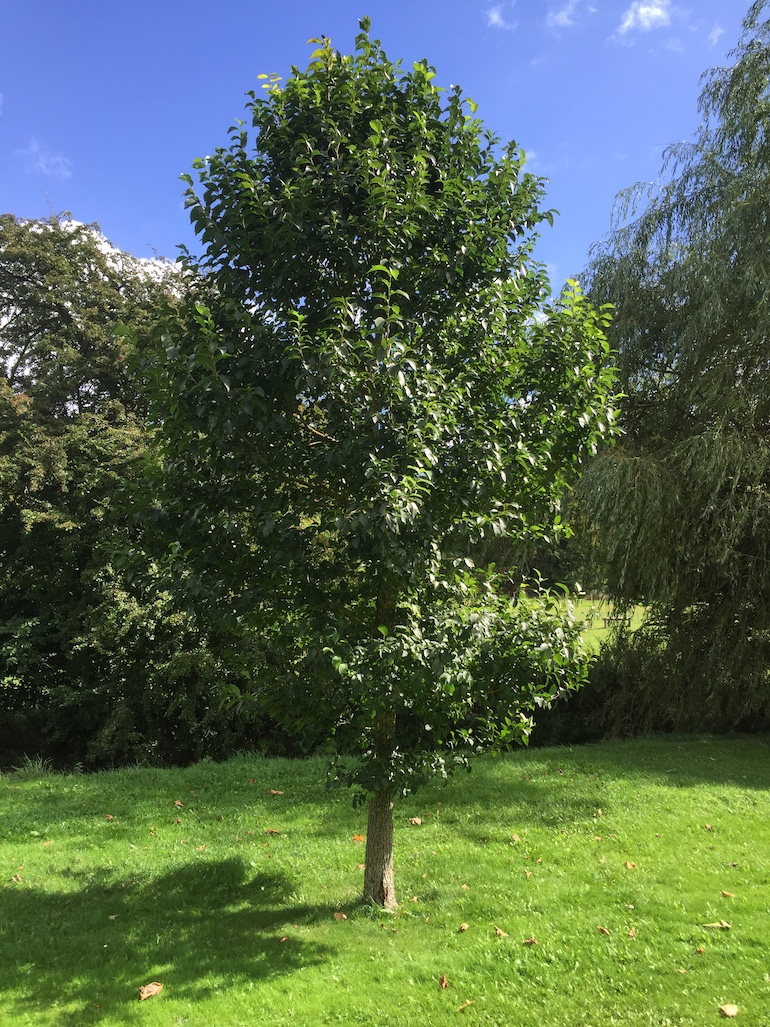

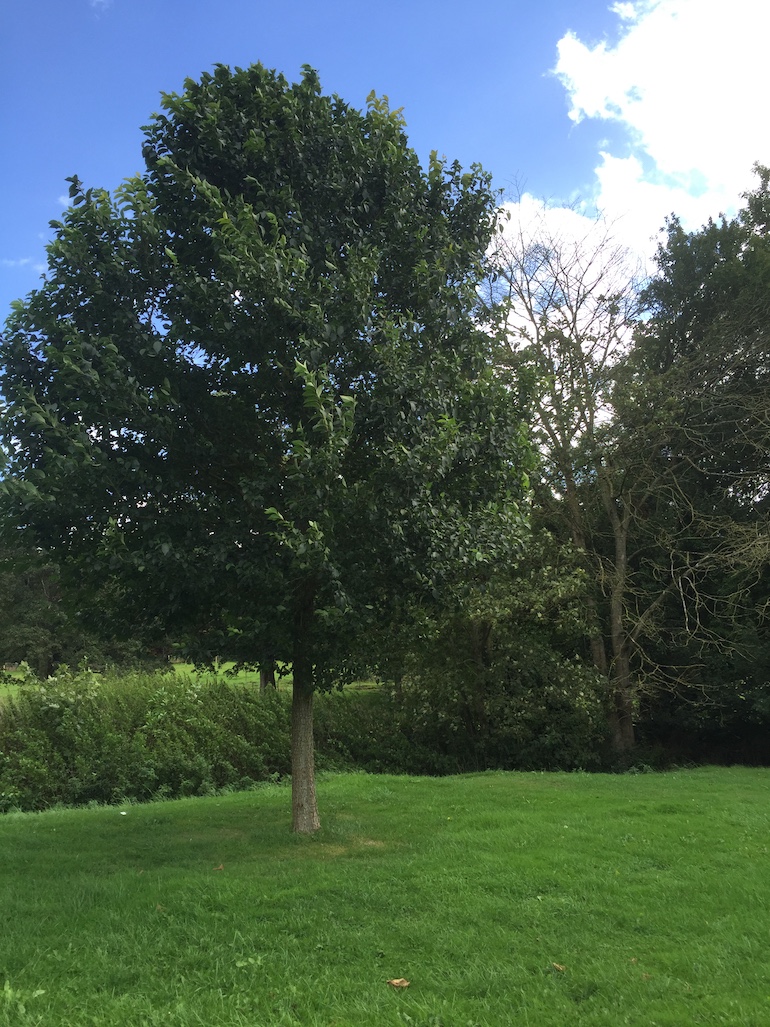
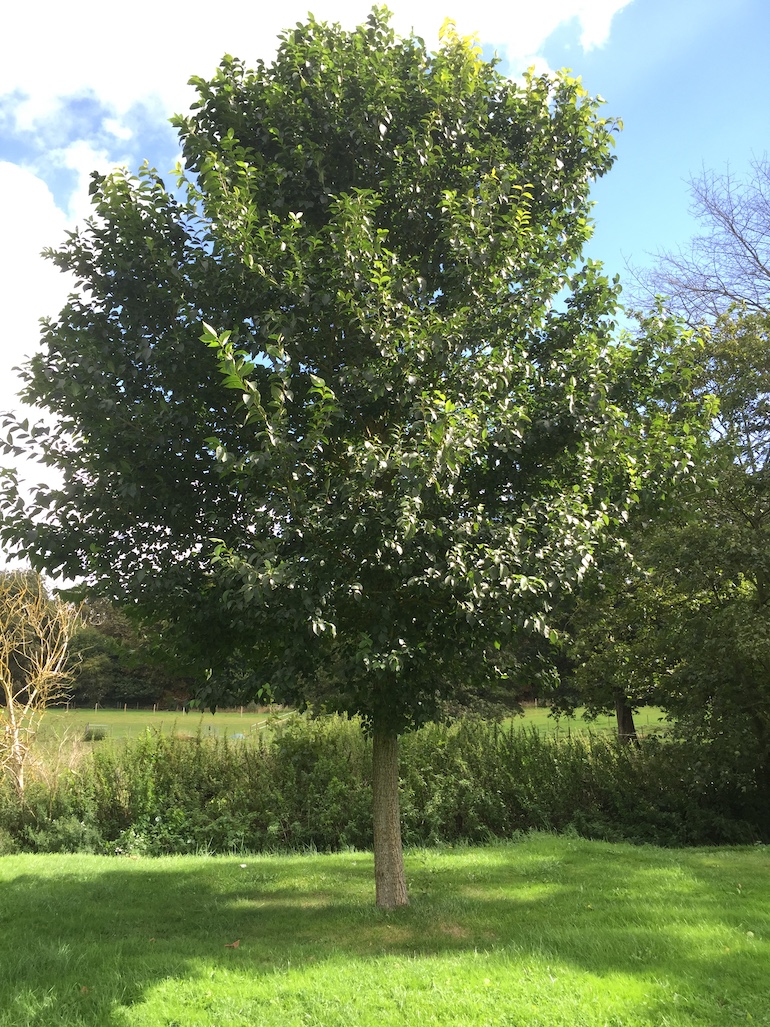


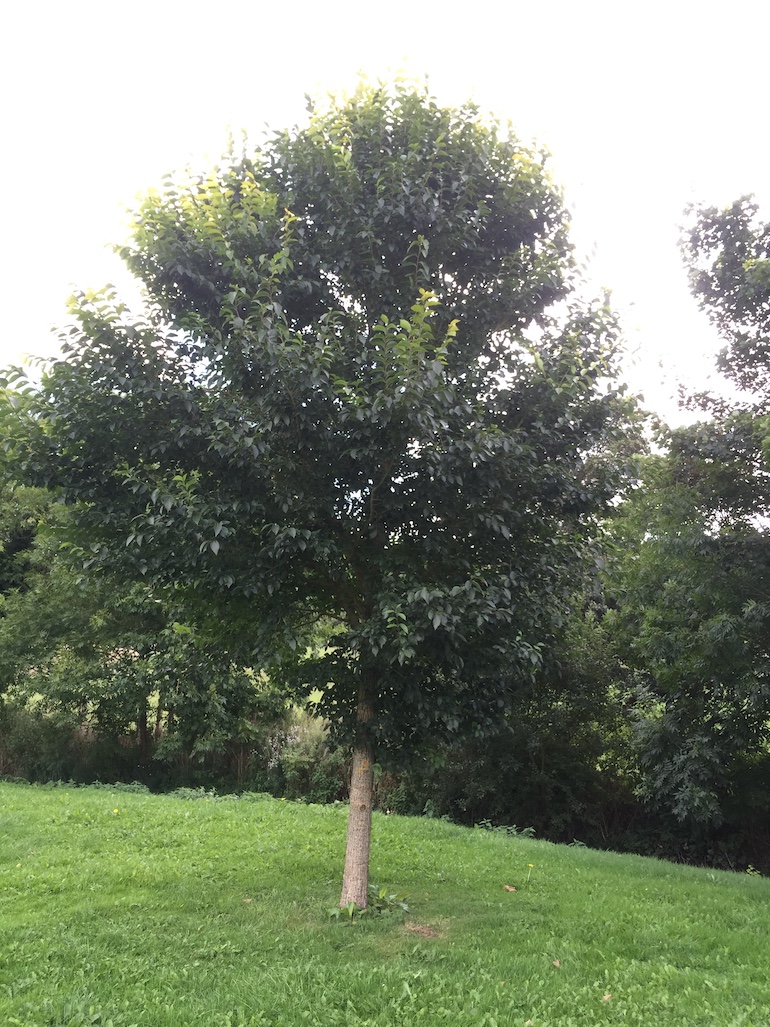
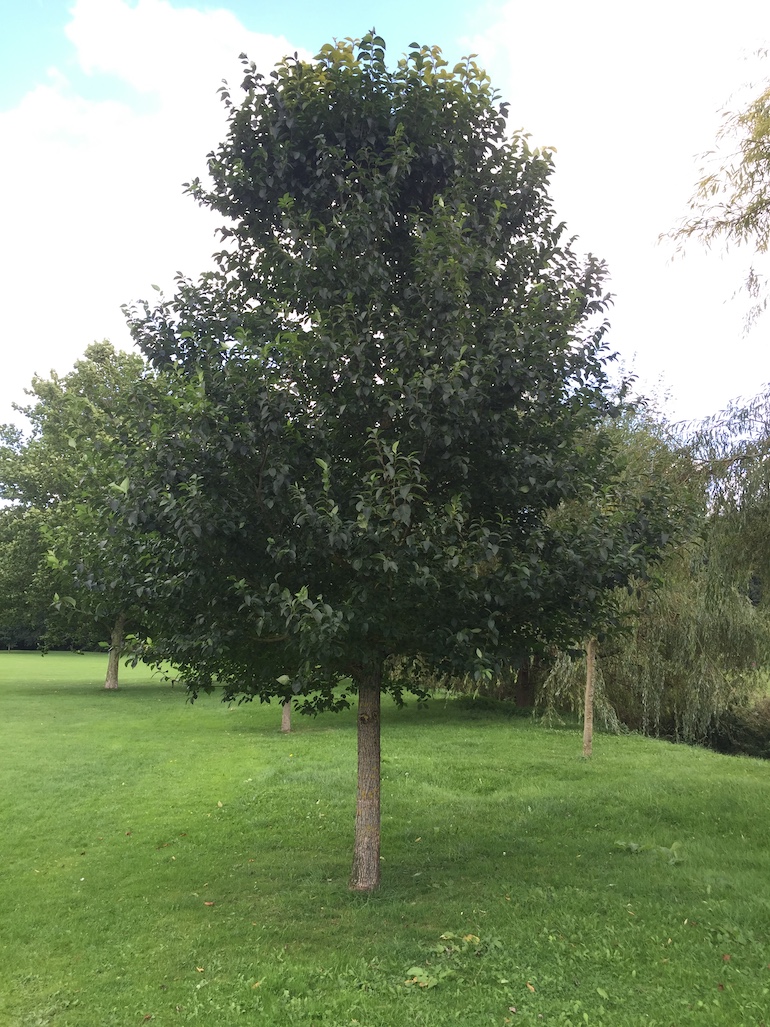
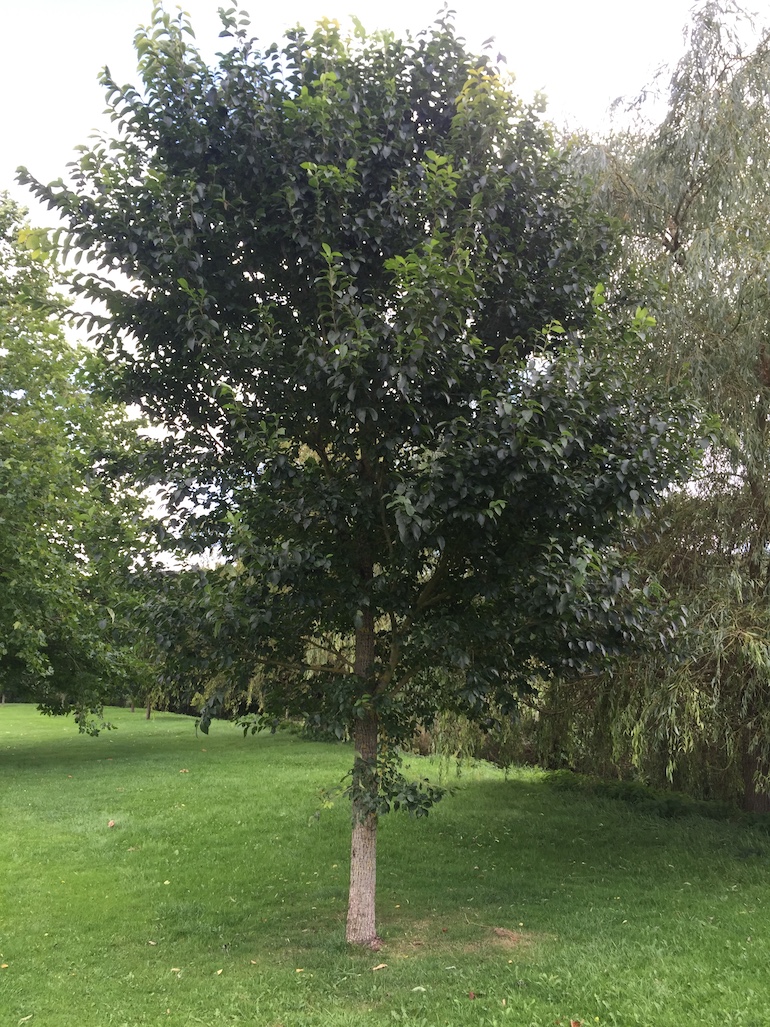


Ulmus New Horizon in June 2022
So forward on to June 2022, another 6 years on and all 15 are still doing well with one or two developing at a faster rate than the others but overall good canopy development is shown in the 12 years since planting in 2009. They are already making a great contribution to the landscape already and further new planting with varieties of resistant elms has also been carried out in the area to help with the Elm landscape restoration.
